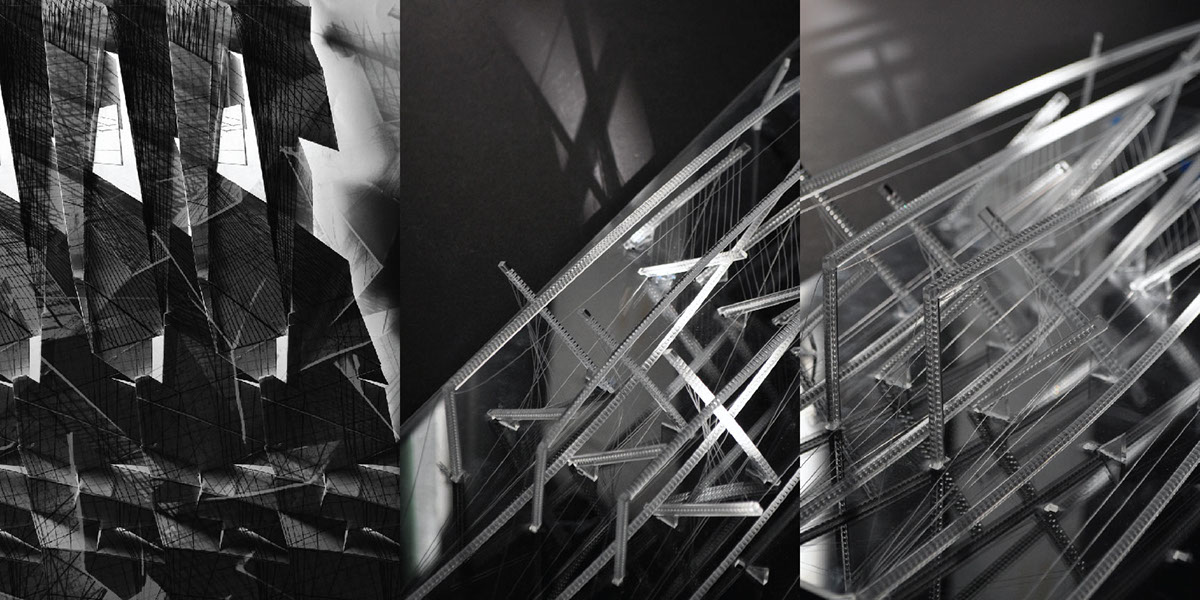Computing Drawing: Inhabiting Surface
This studio explores computer programming as a design medium. How programming can and should be
used to conceive of architecture is an open question–a question that “off the shelf” modeling and drafting
software unfortunately circumvents. Rather than immediately computing architecture, this studio begins
by computing drawing, which, by definition, allows the human eye and mind to play a prominent role
in design. Conceptions of authorship, ambiguity, and representation remain the focus of attention and
criticism as the course moves from drawing to building.
Final Review
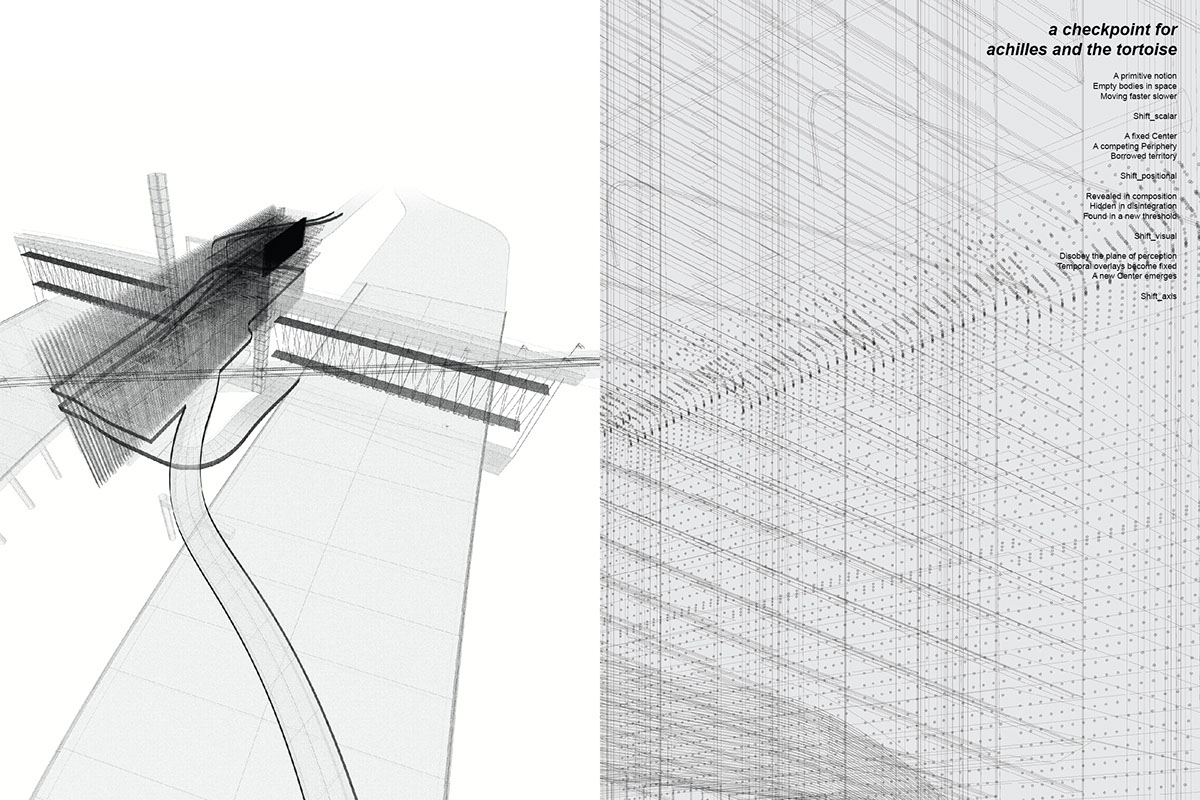
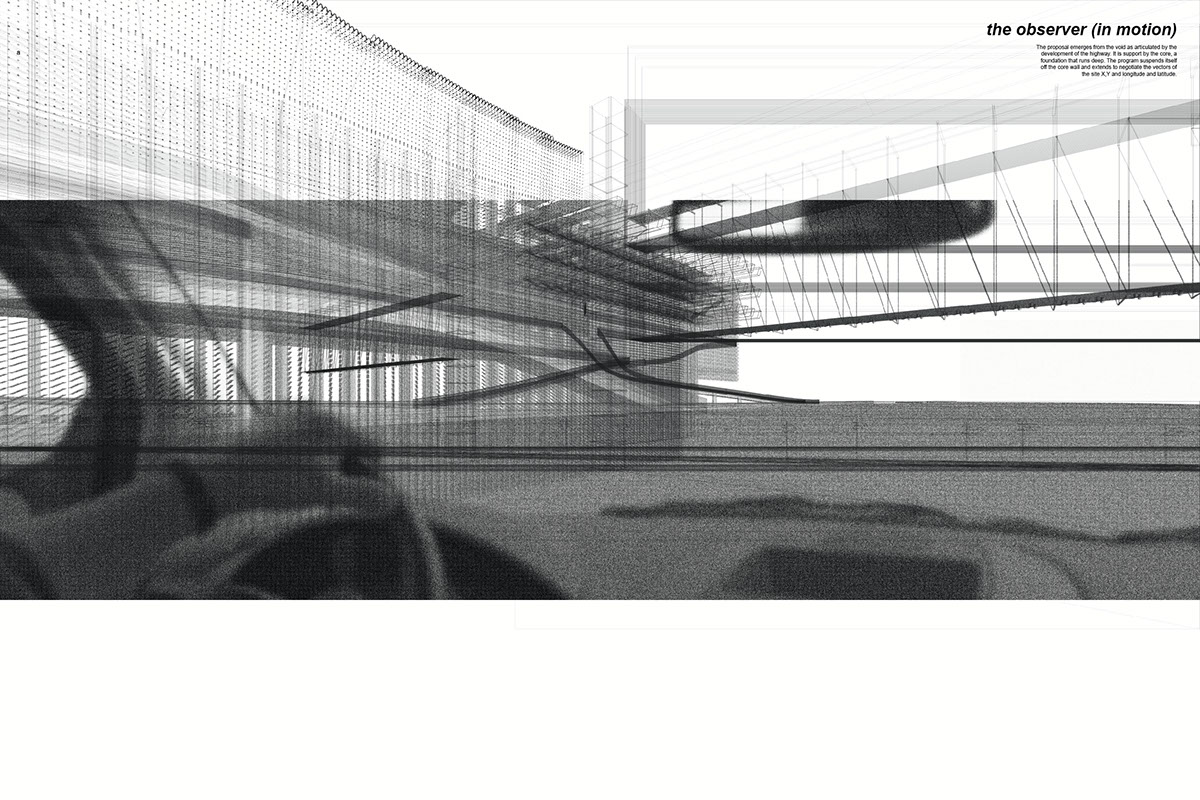

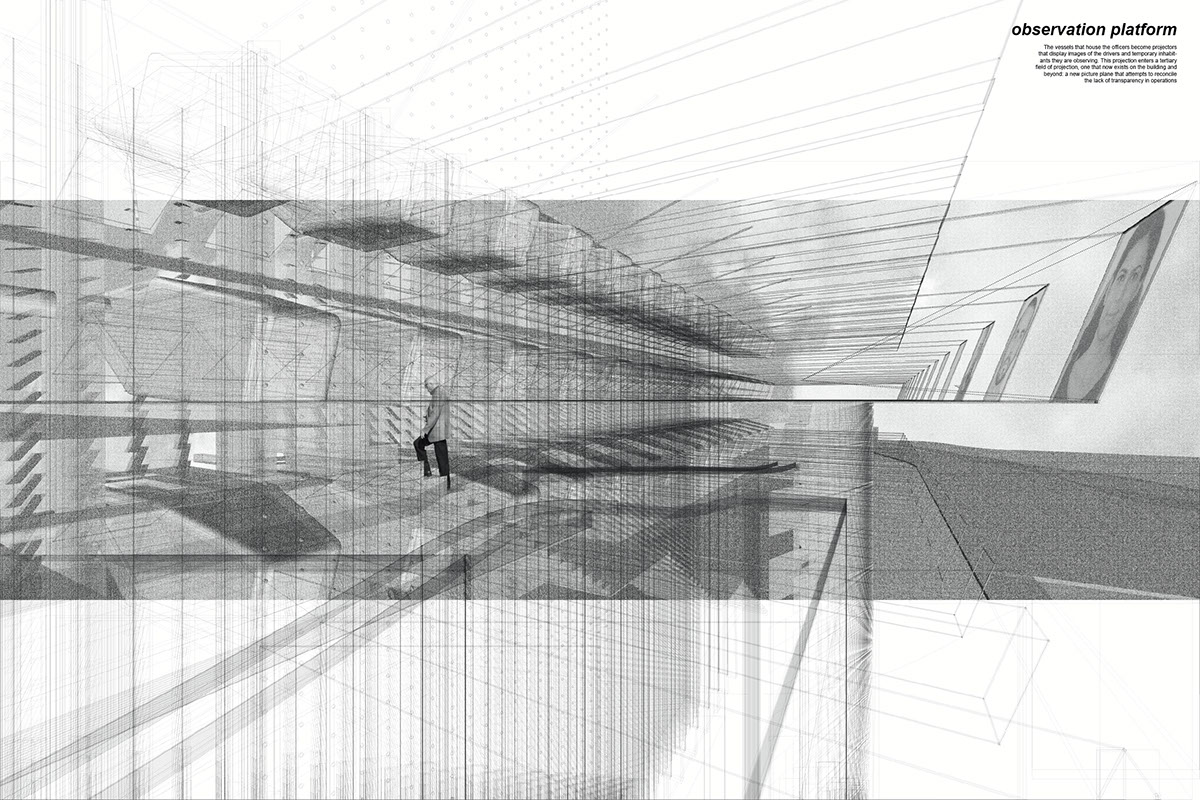

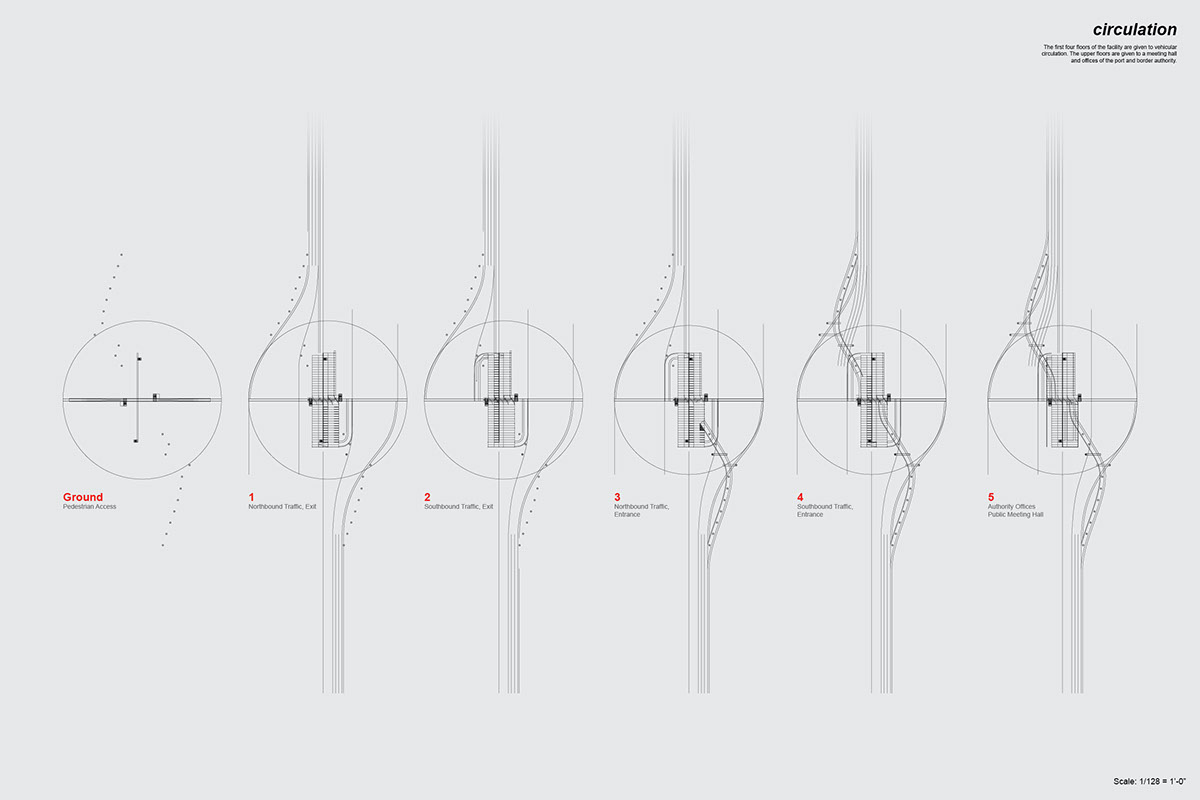
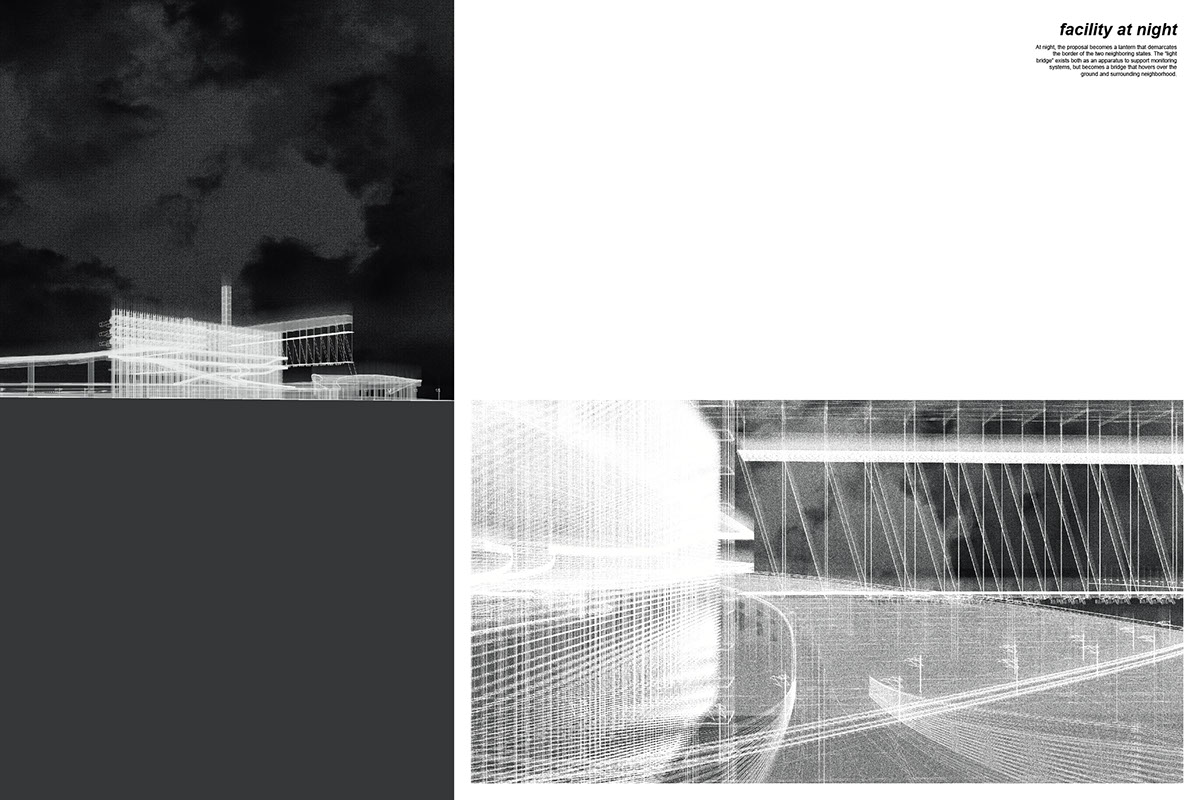
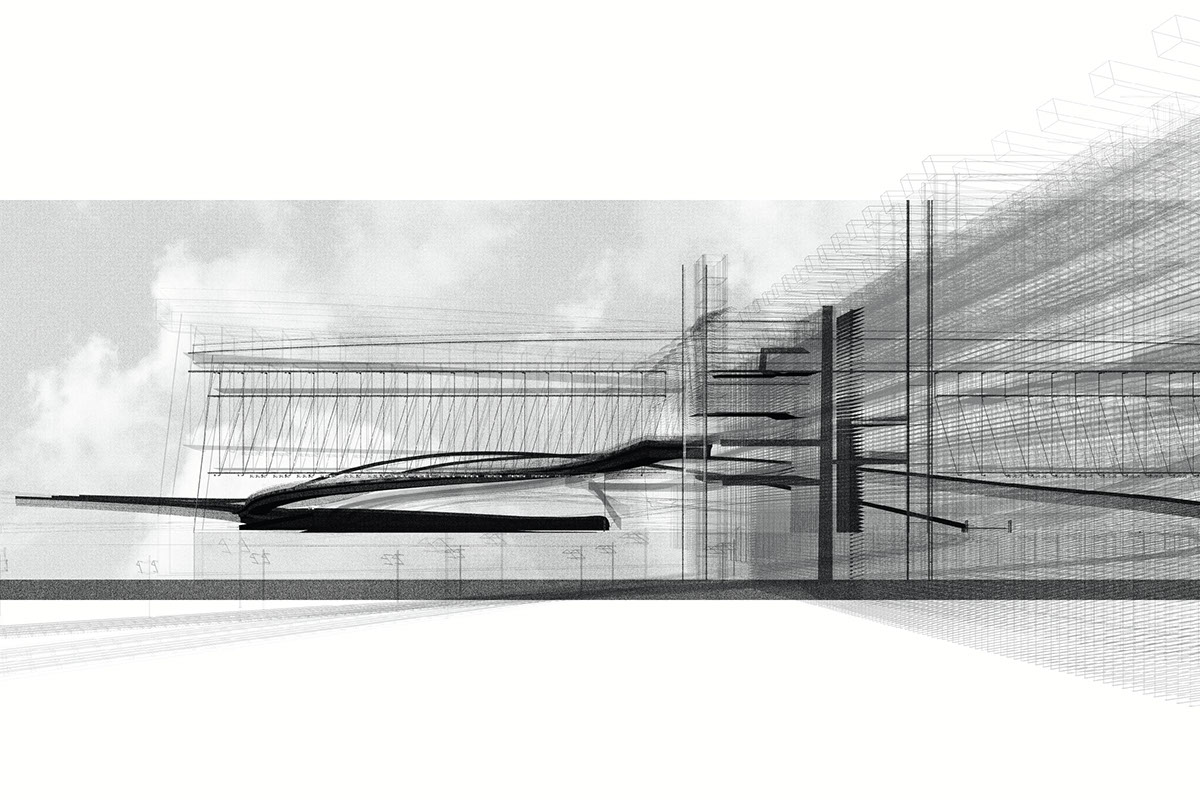
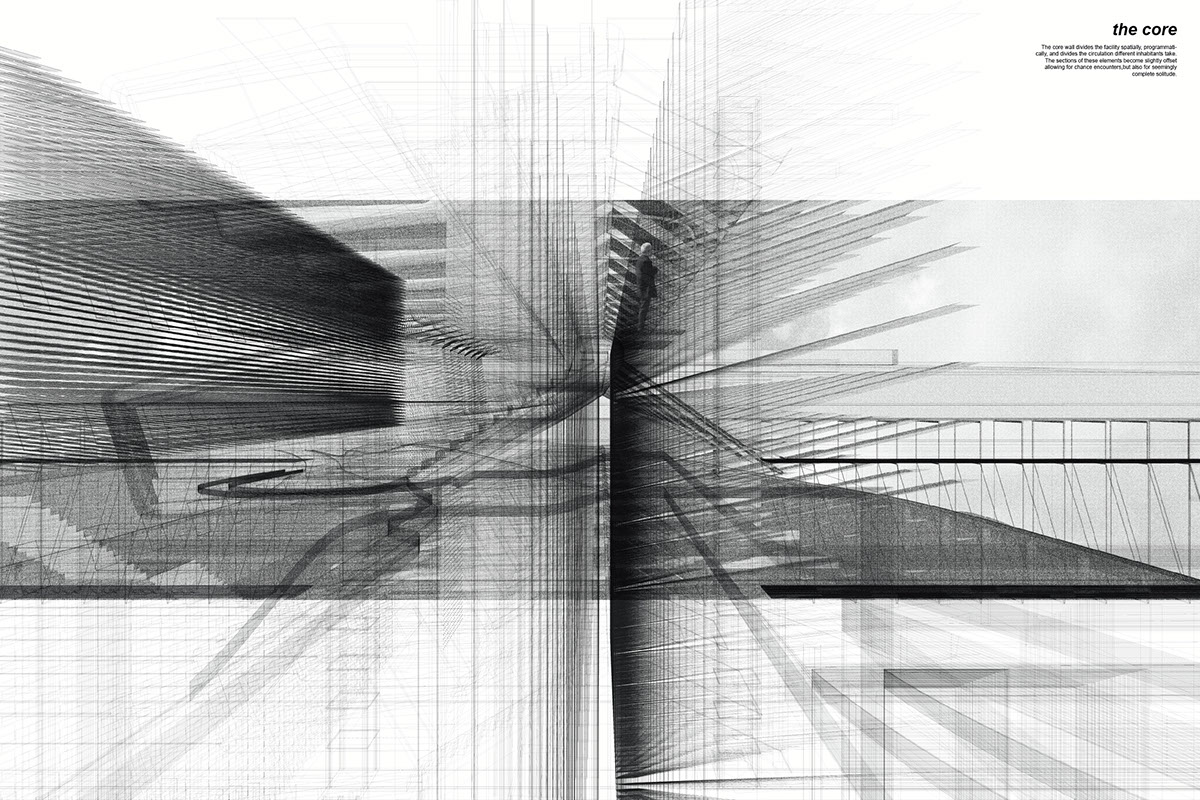
Phase 3: Corner Border Toll Plaza
This is the third and final phase of the course. A site and program will now be introduced. They are not meant to be the subject of inquiry, but devices to further your research. The site and program will provide resistance and motivation, but successfully responding to their forces is only the beginning. You won’t need to visit the site or re-think the program. They are given, fixed, and fictional (although based on facts). The “big question” that initiated our work must continue to be addressed: how does drawing mediate/influence/ fuel/disrupt the relationship between you, computing and architecture? Extend your work from phases one and two and continue to design a design process. Continue to experiment with the relationship between drawing and space. How, with what media, and with what machines you do computation is open. We will consider and discuss the role of automation, indirection, instruments and knowledge under the conceptual umbrella of authorship.
The site is at the border between Rhode Island and Massachusetts.
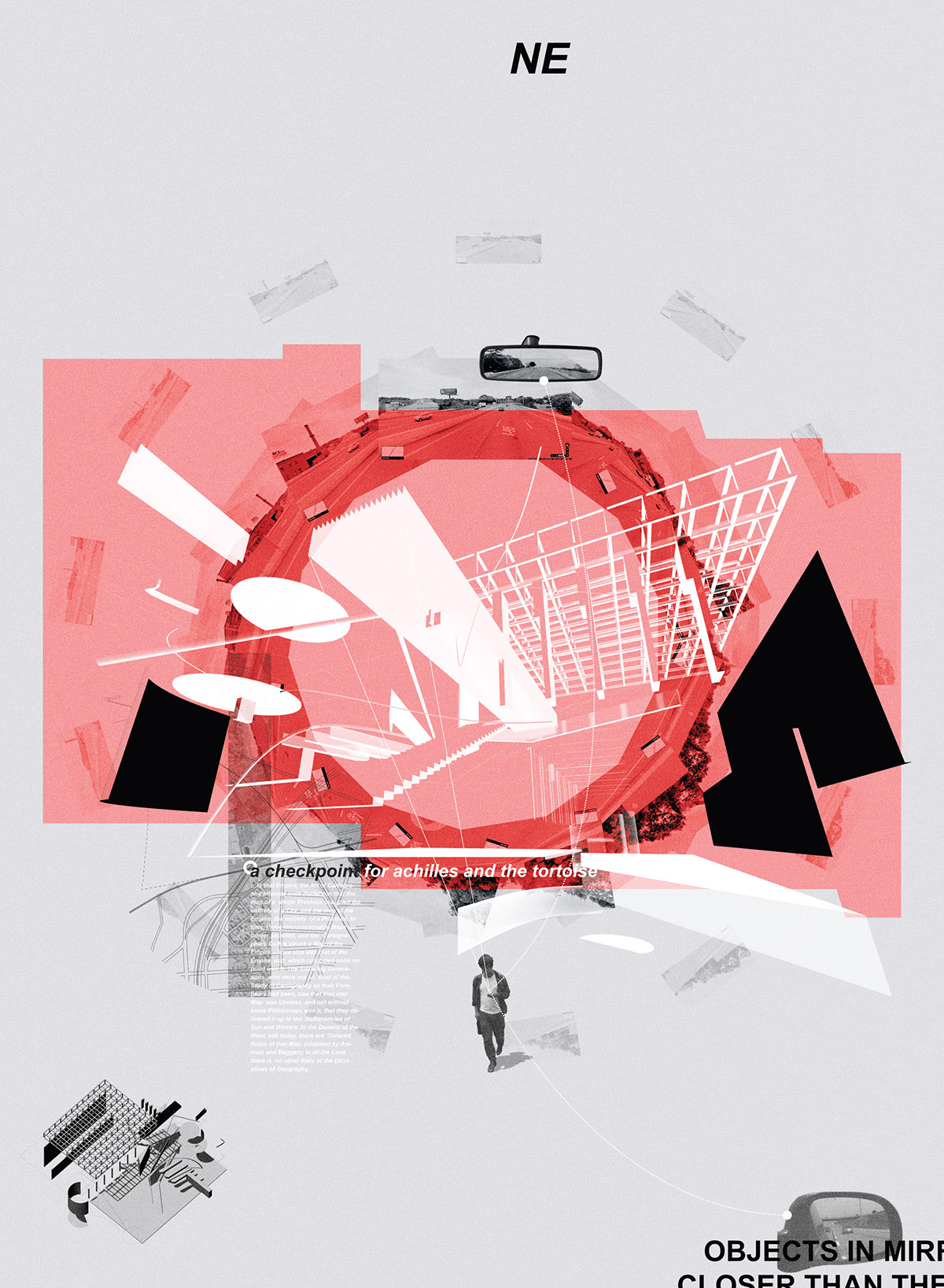
RI and MA have entered into an agreement to jointly collect tolls from automobiles crossing their shared state line on I-95. The toll collection facility marks the border (which in legal terms is a line, but in spatial terms is a surface). Each state collects tolls from automobiles leaving their state, which allows their offices and staff to operate entirely within their territory. 12 Northbound, 12 Southbound and 4 flexible lanes (for a total of 28 lanes) will make up this facility. The flexible lanes can be swapped to serve Northbound or Southbound traffic as demand requires. Insurance regulations require that RI toll collectors operate on the RI side and the MA collectors operate on the MA side. Each state has appointed a Border Toll Authority Officer, who will occupy, with a small staff, a suite of offices within the border (6000 SF). Additional program includes a café (3000 SF), scenic overlook (1000-10,000 SF), and public rest rooms (750 SF). A passenger/ freight rail line runs along (and crosses through) the border within the site and must be maintained, although the position, length and shape of the track may be modified. Likewise, the location and position of I-95 may be adjusted within the site. However, the portions of I-95 under the rail and street bridges must remain. Former buildings and roads on the site (indicated by dashed lines in the plan above) have been demolished and the site is essentially an open landscape. Besides a 5’ change in elevation at the bank of the river, the site is flat.
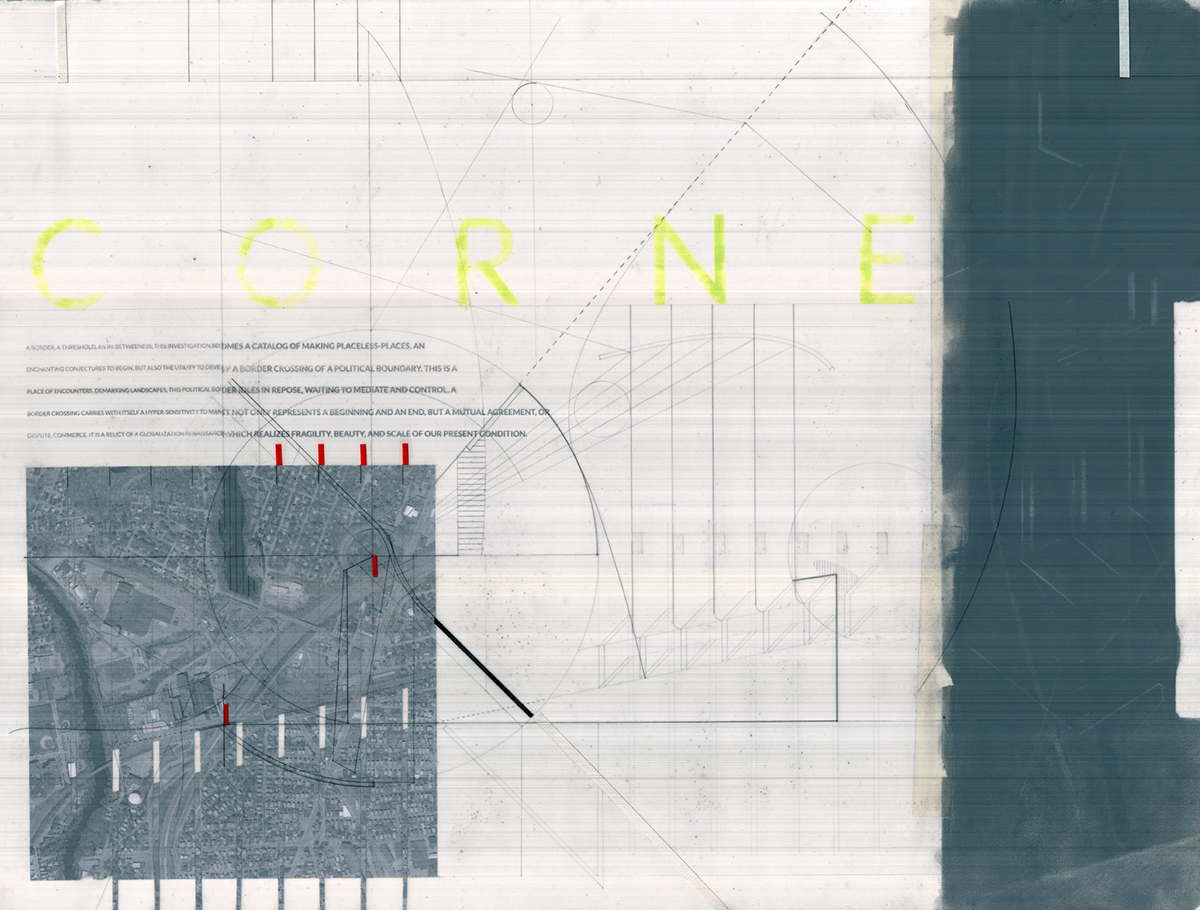
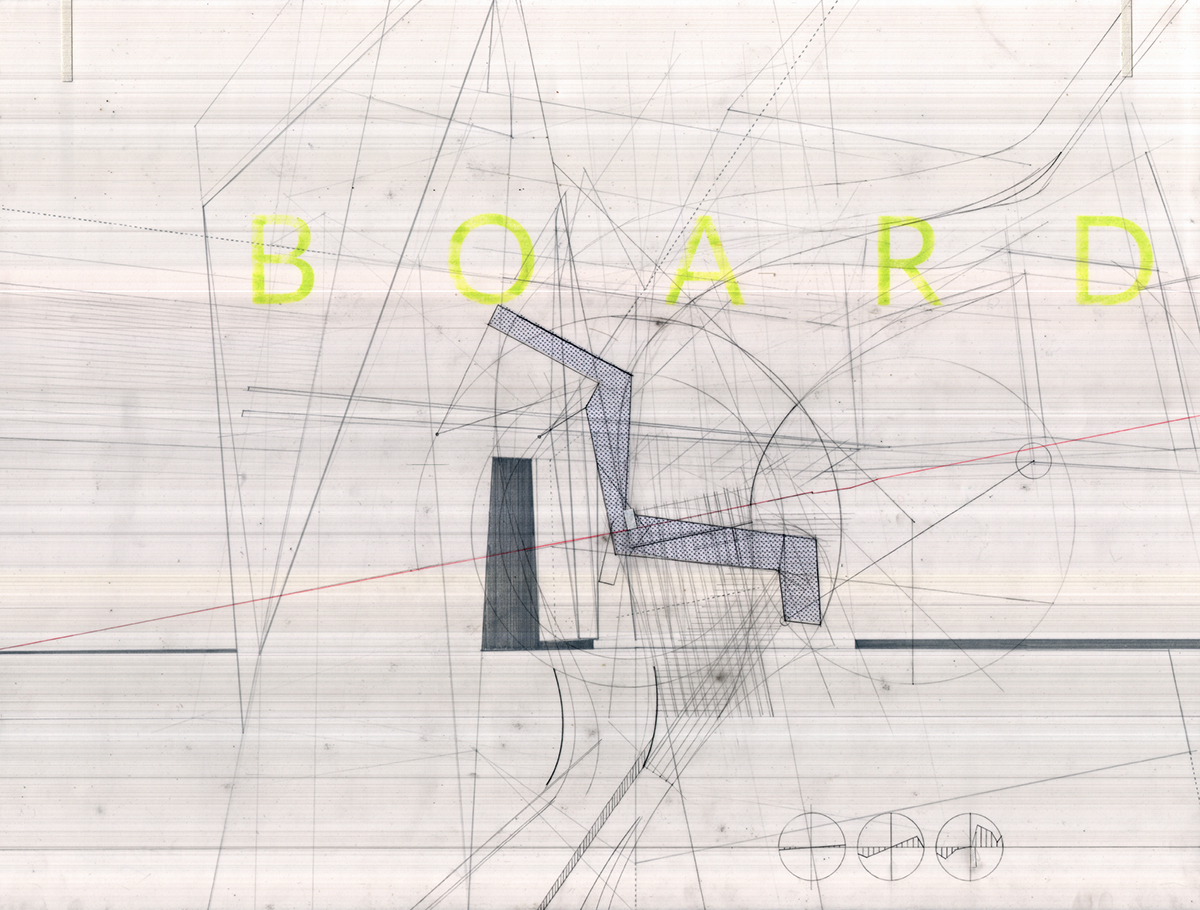
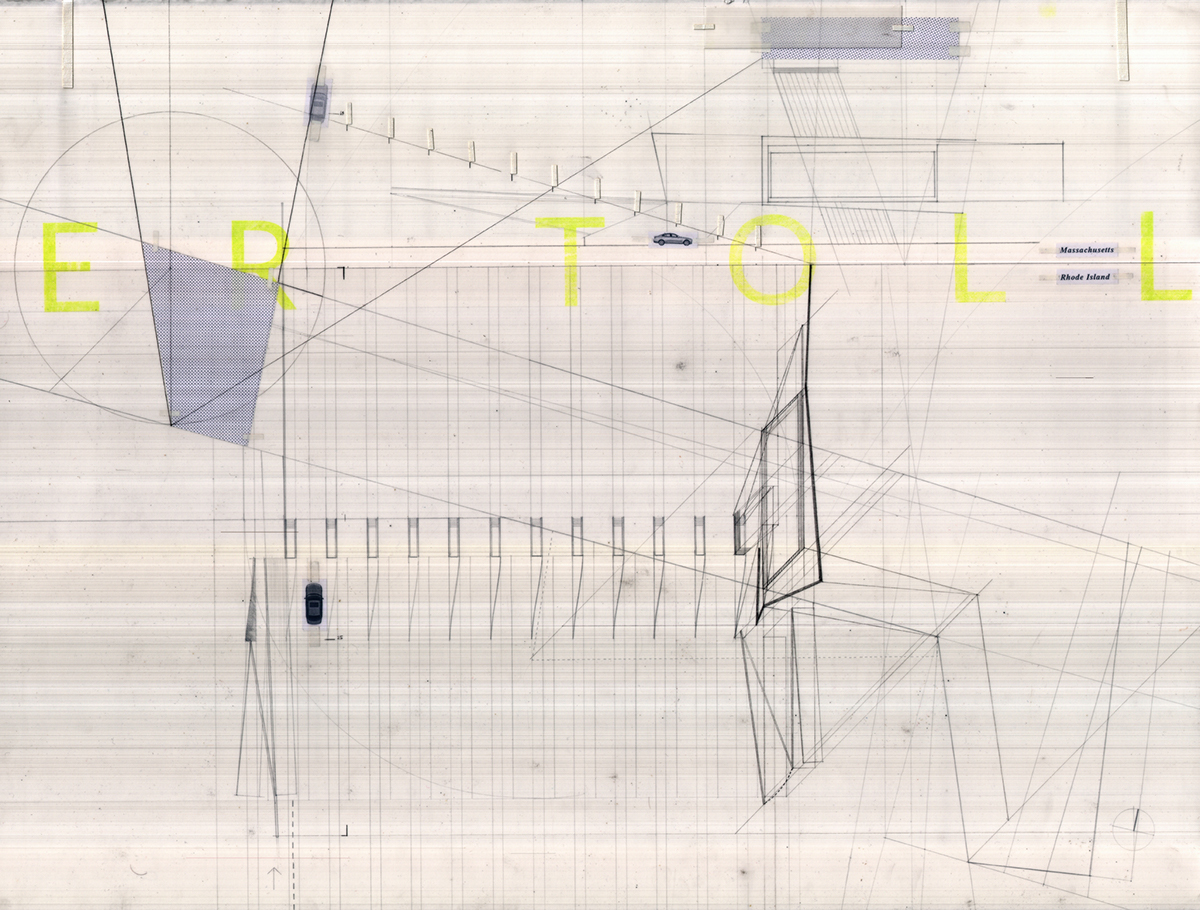
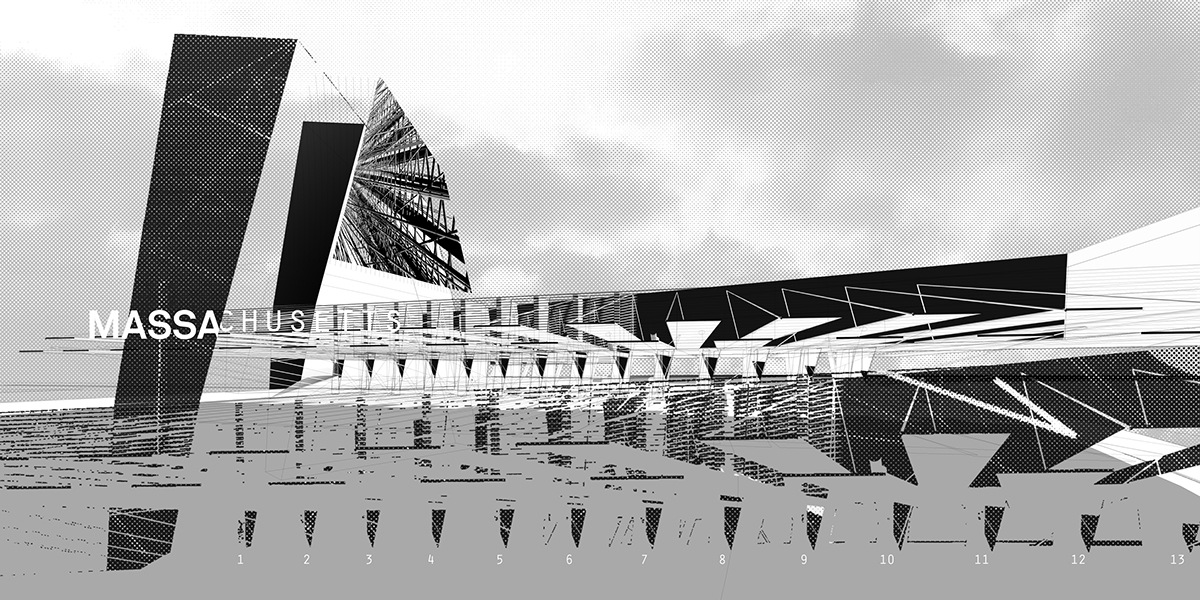
Phase 1: Algorithmic Drawing with the Problem of Foreign Input
The first exercise was to collect 10 drawings and for three of these drawings, articulate an algorithm
that could be used to replicate the drawn geometry. This process may be speculative and/or presumptive.
that could be used to replicate the drawn geometry. This process may be speculative and/or presumptive.
(Left to Right): Julie Mehretu, James Busby, Barry Le Va, Hiroyuki Hamada, Jessica Rankin, Brodsky and Utkin, Rick Gooding, Matthew Bohne, El Lissitzky, Enriq Miralles.
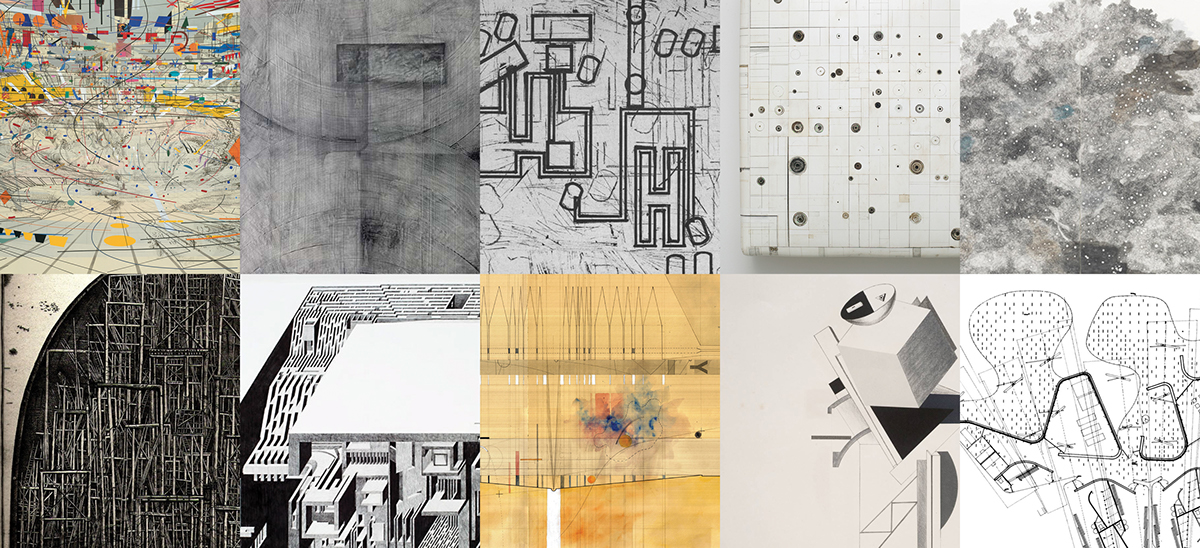
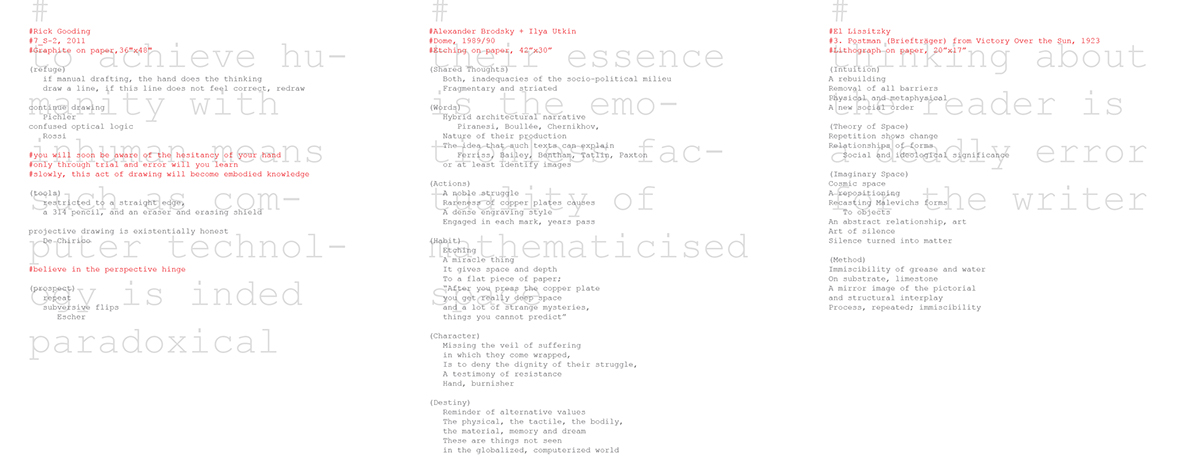
The initial algorithms assumed the form of how a scrpt may appear within the programming language of Python, however the language of algorithms above were unique with respect to the selected work. The algorithms were a combination of artist statements, critique, technique, analysis, and theory that became the algorithm of the work. This intimidating "set of rules" is interested in the importance/unimportance of the identity of the author in reading or reading in to work.
Before jumping into programming, I initiated the process by first articulating my algorithm by executing the drawing by hand.
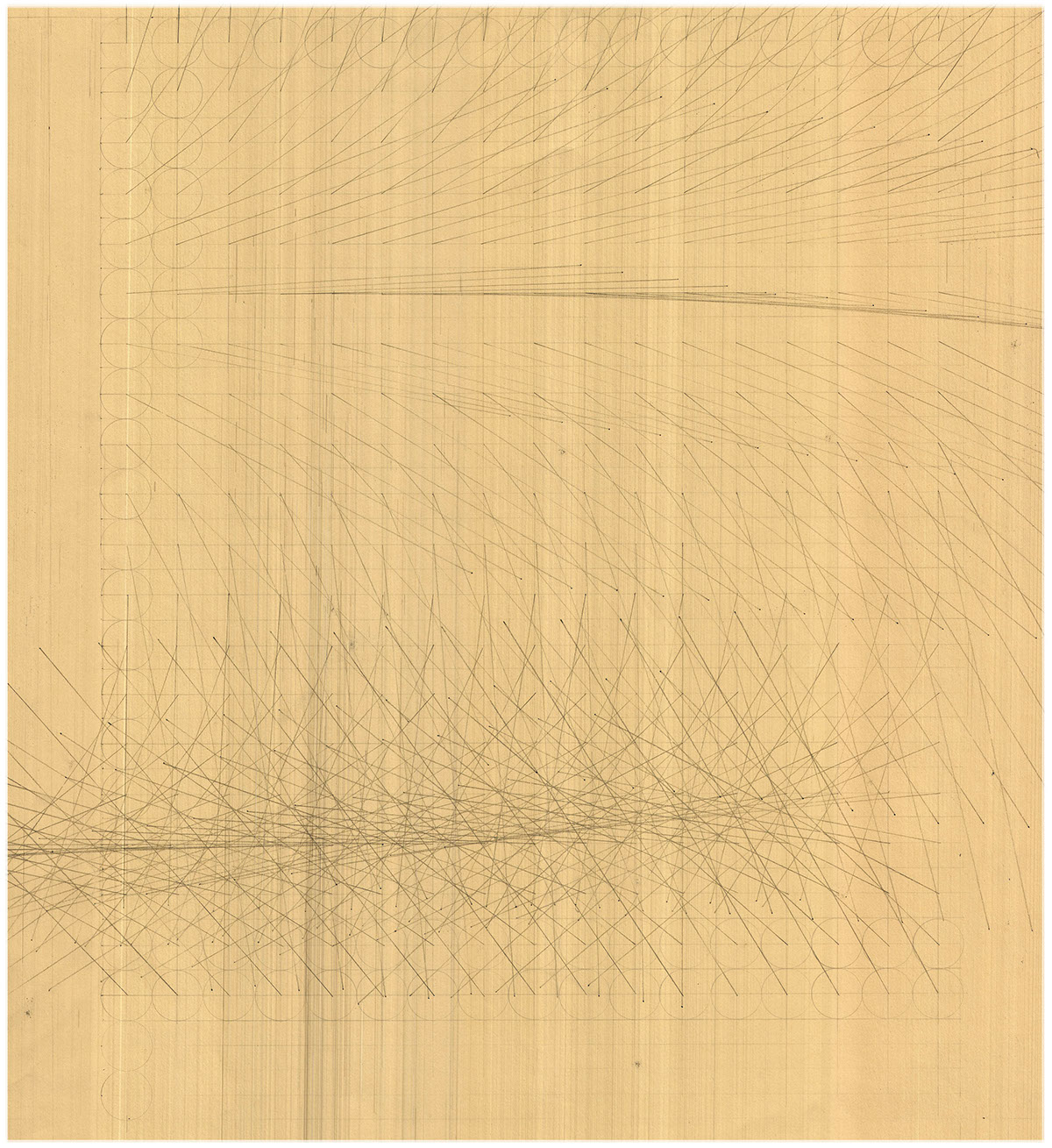
Below are intial experiements with simple Python script.
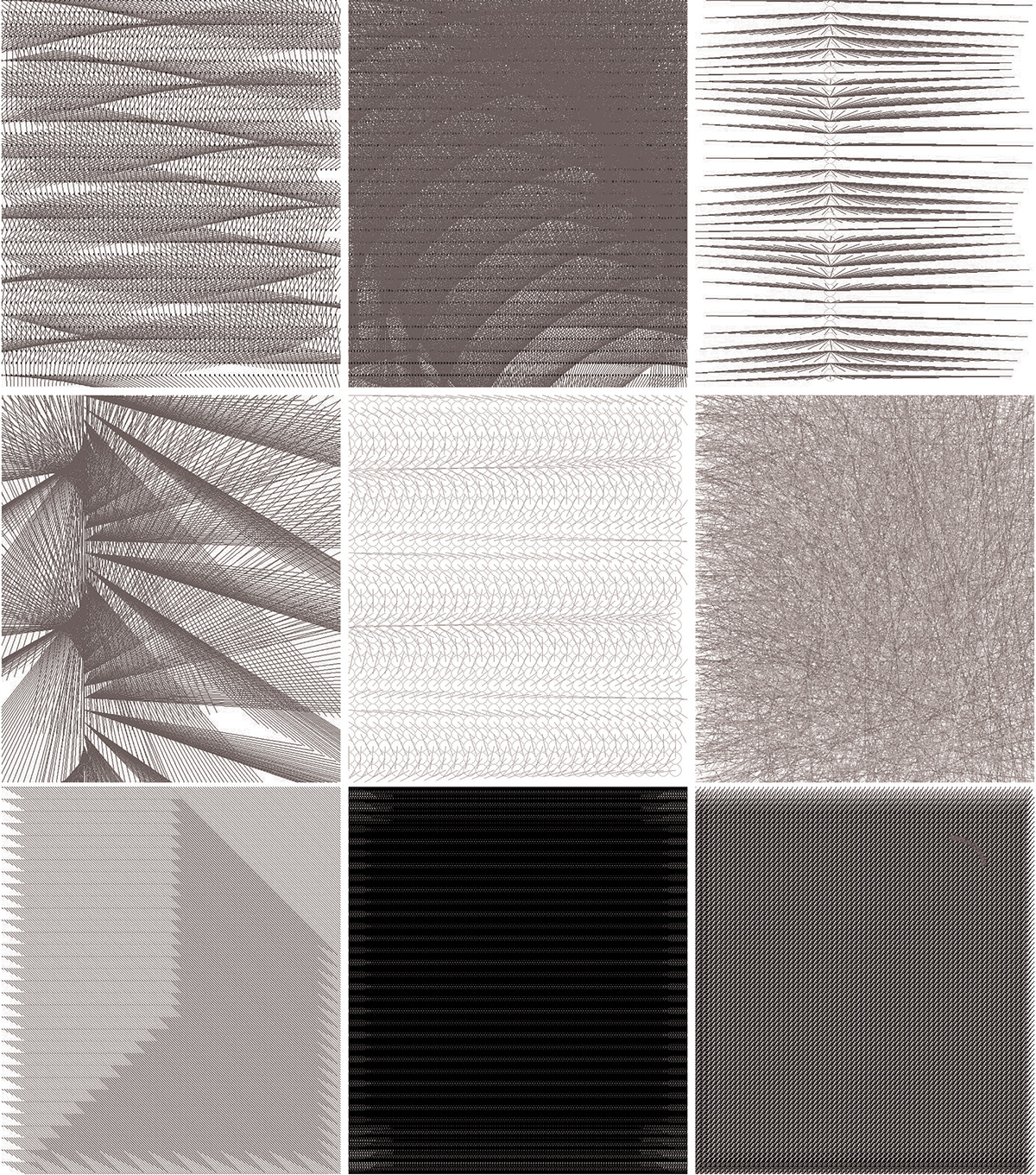
The followng studies are continued explorations of Python.
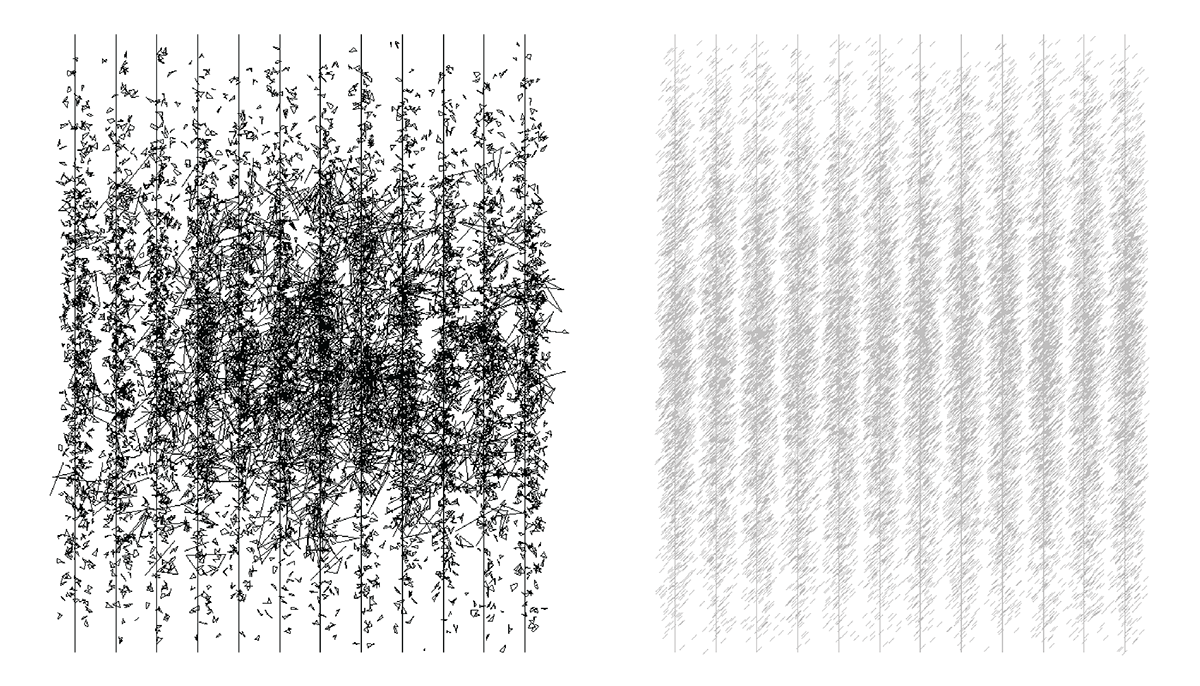
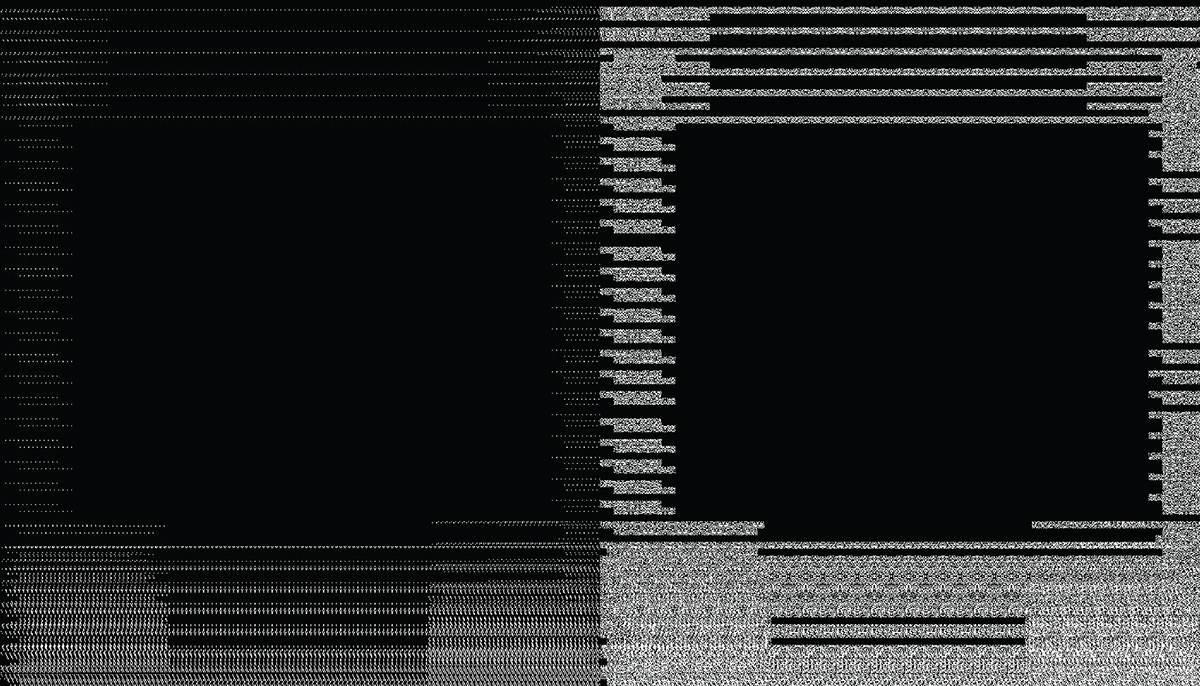
My first attempt using a HP 7475A Desktop Pen Graphics Plotter
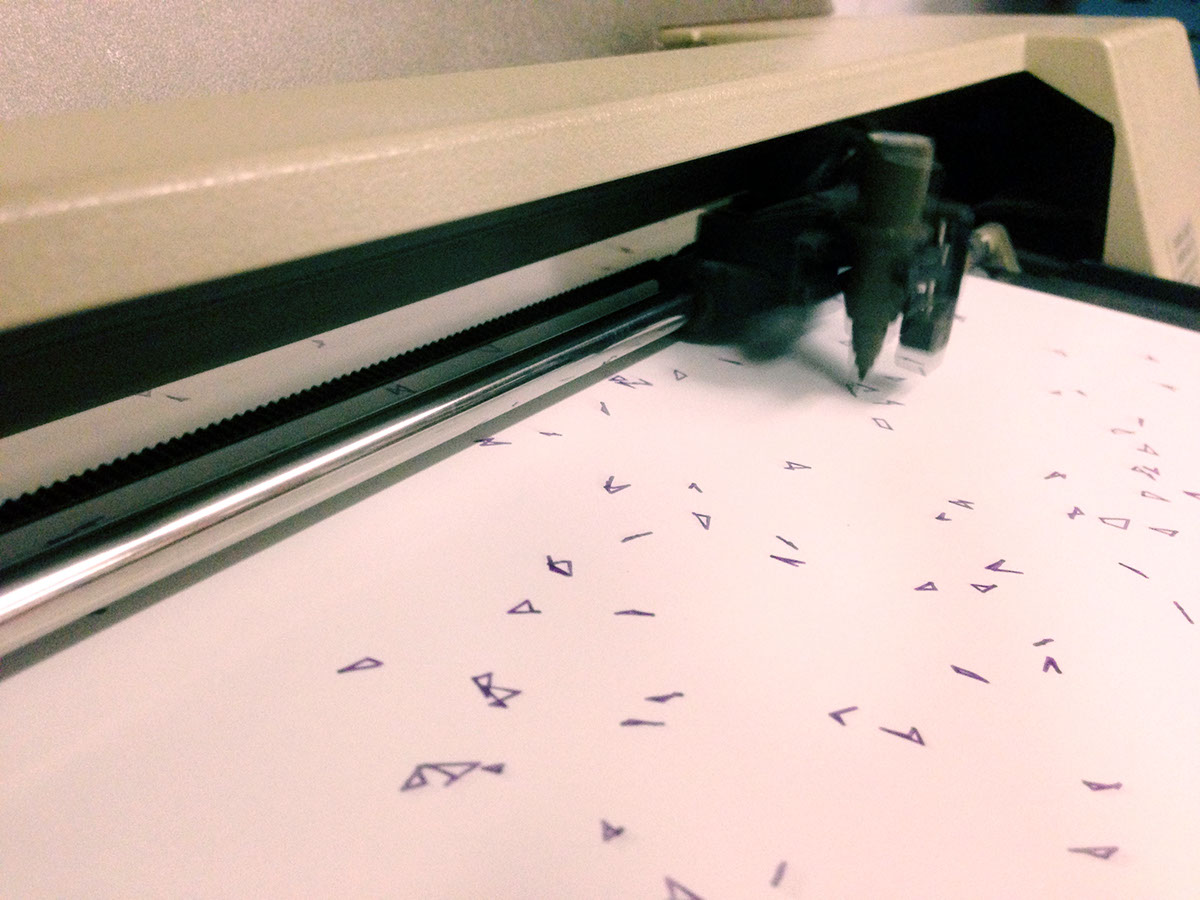
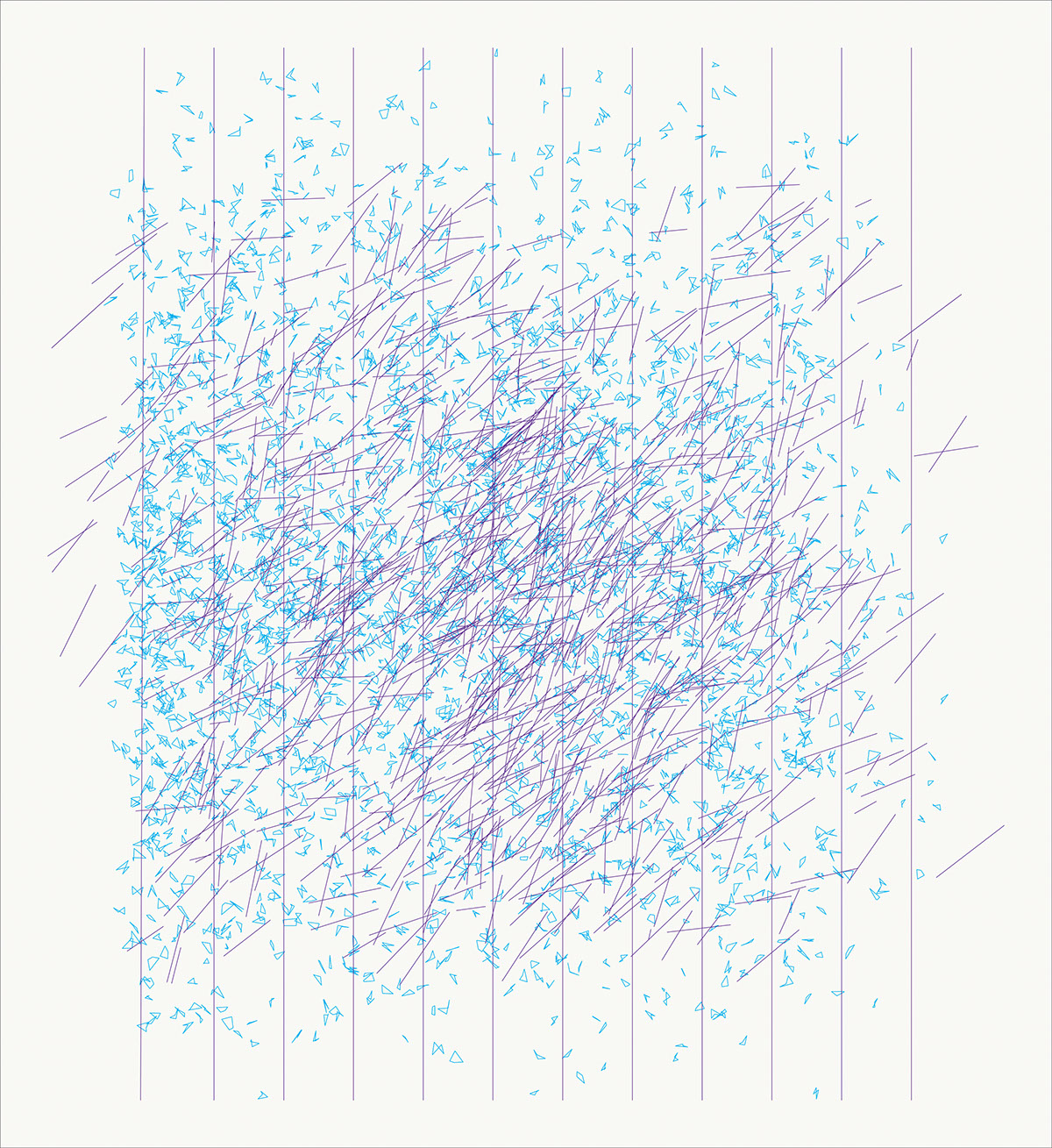
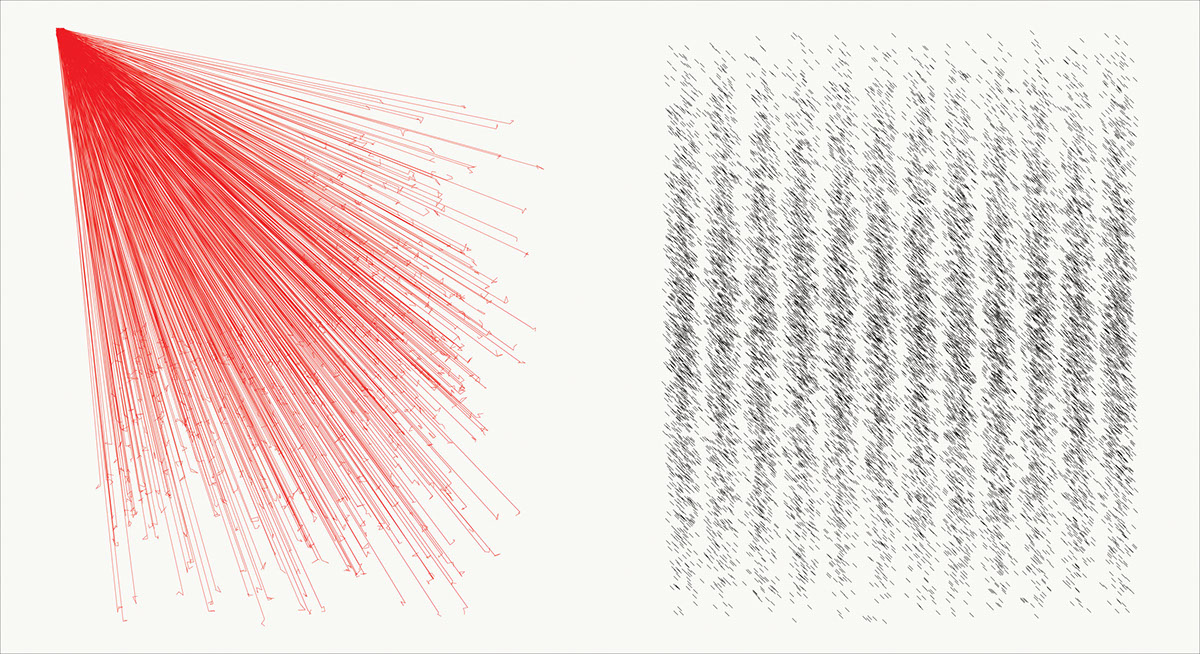
The pen plotters accept many marking tools. Below is an experiment with a white gel pen on black paper.
The drawings above and immediately below are a continuation of the using line to explore depth.
The larger 22" x 24" pen-plotted drawings were accomplished using a large format Roland Pen Plotter. The drawing below was produced using Python, Pygame, and Chiplotle and then sent to the plotter to print. This drawing served as the "ground" for a hand delineation.
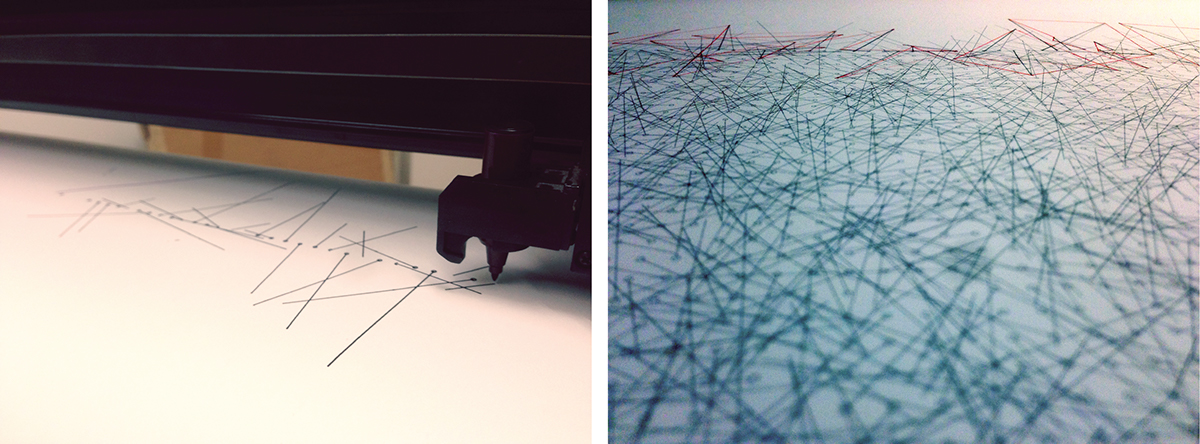
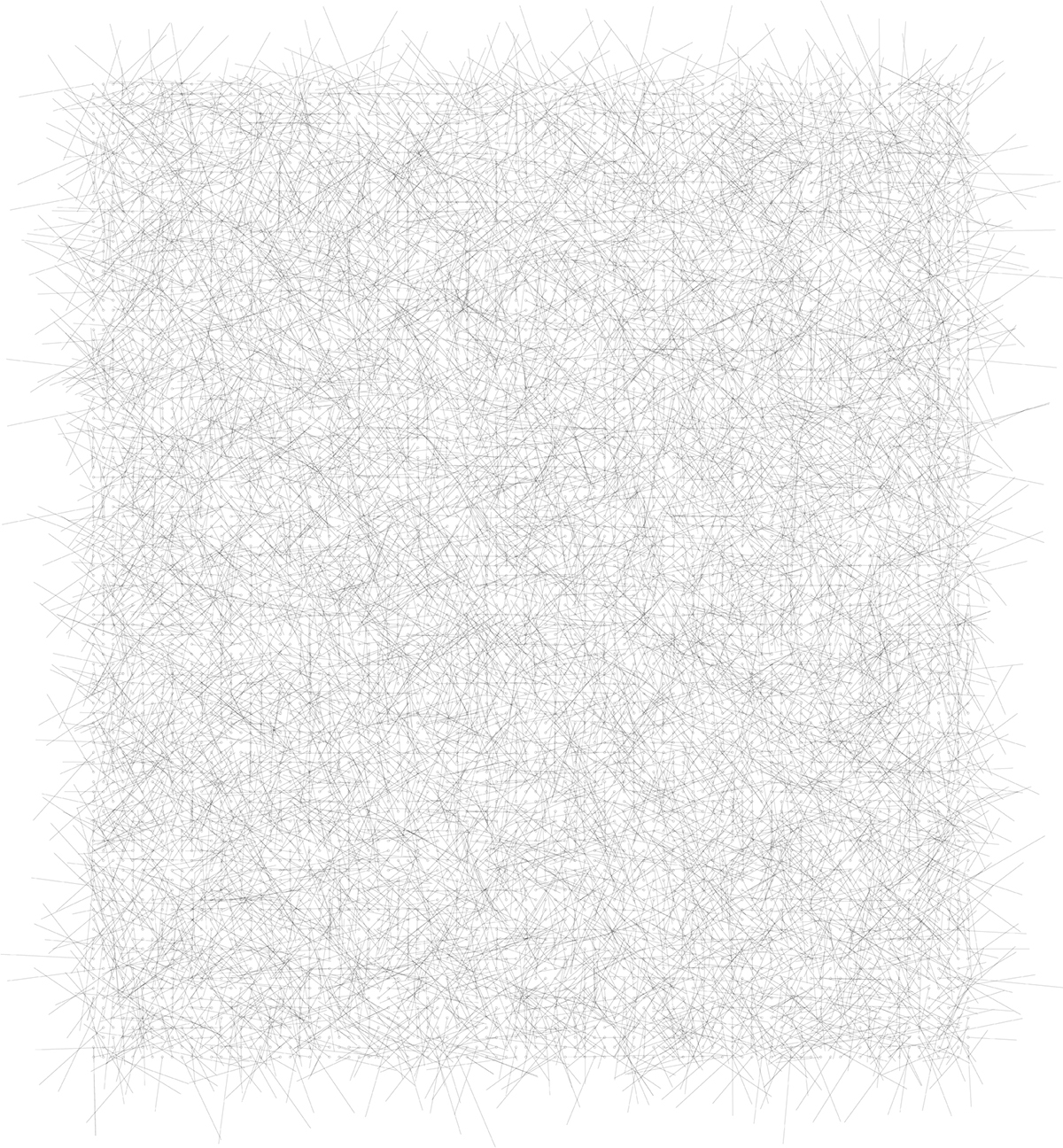
Phase 1.2: Foreign Input
In this phase, we are now responsible for writing a description of what is to become the content for another student’s drawing. Our job is to profoundly challenge the other student’s current mode of thinking and to push their drawing to convey something foreign to its nature. Having a new motive force will make this other student’s drawing better. We are now implicated as a partial author of this other drawing.
My "foreign input" was written by Shou Jie Eng, and I was writing the "foreign input" for Nicole Chiu.
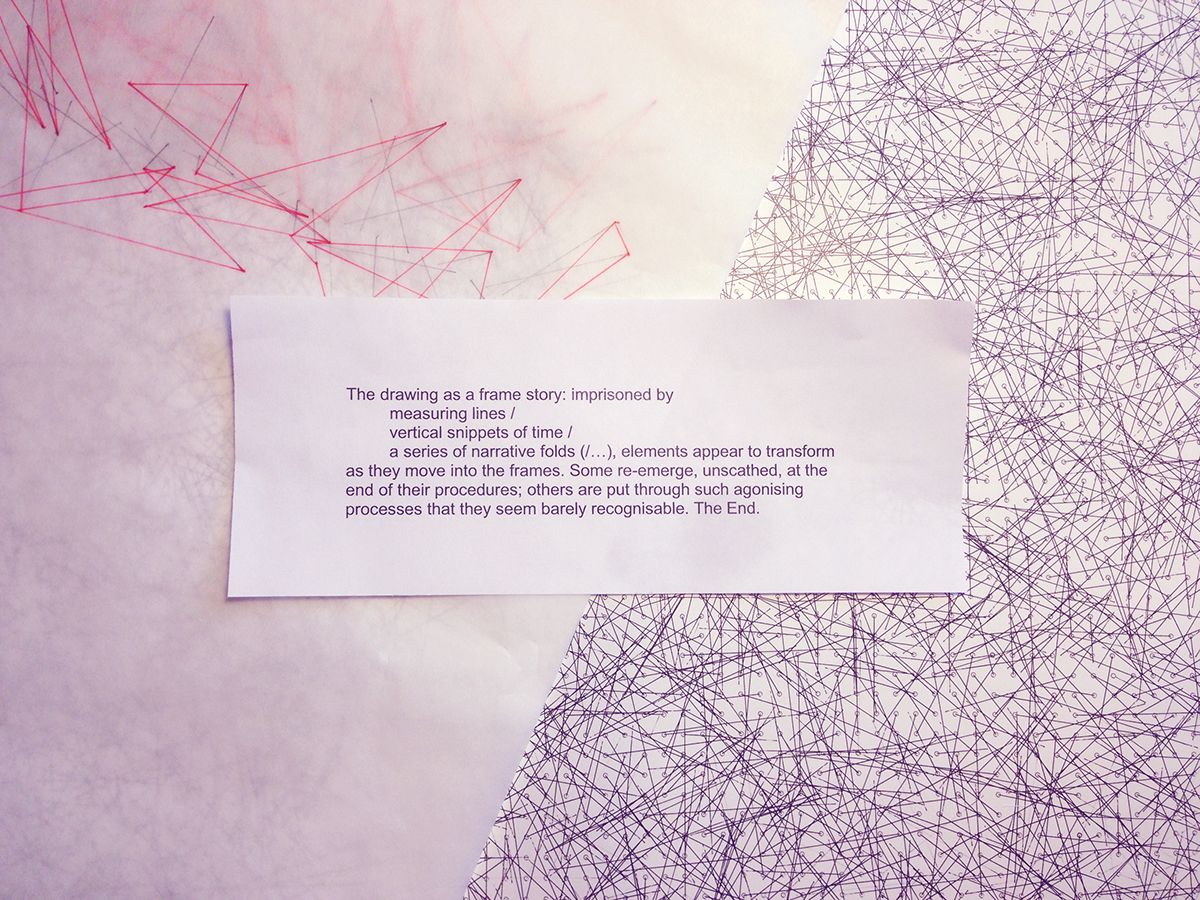
Below is a hand-drafted drawing exploring the conditions expressed in the "foreign input."
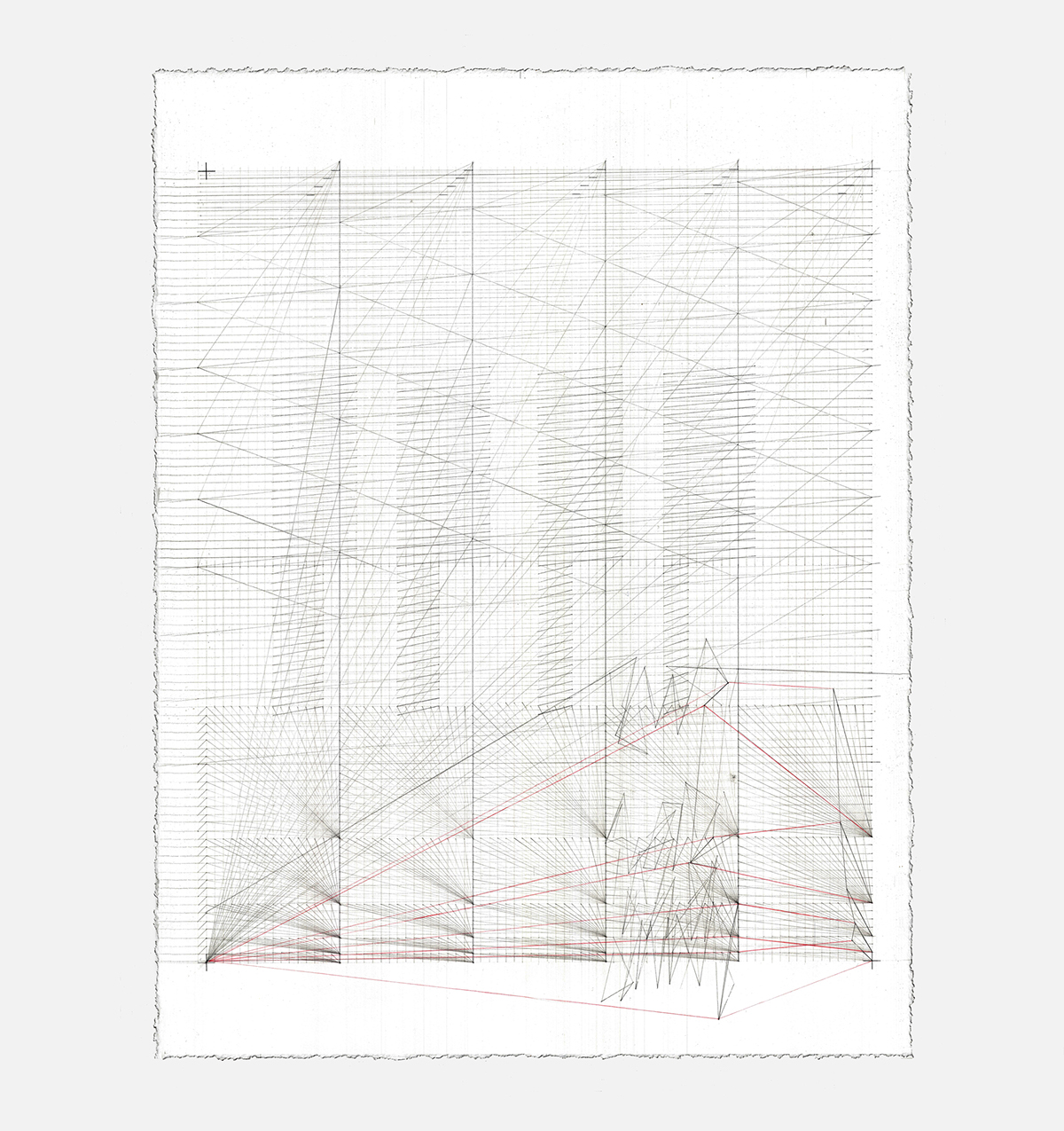
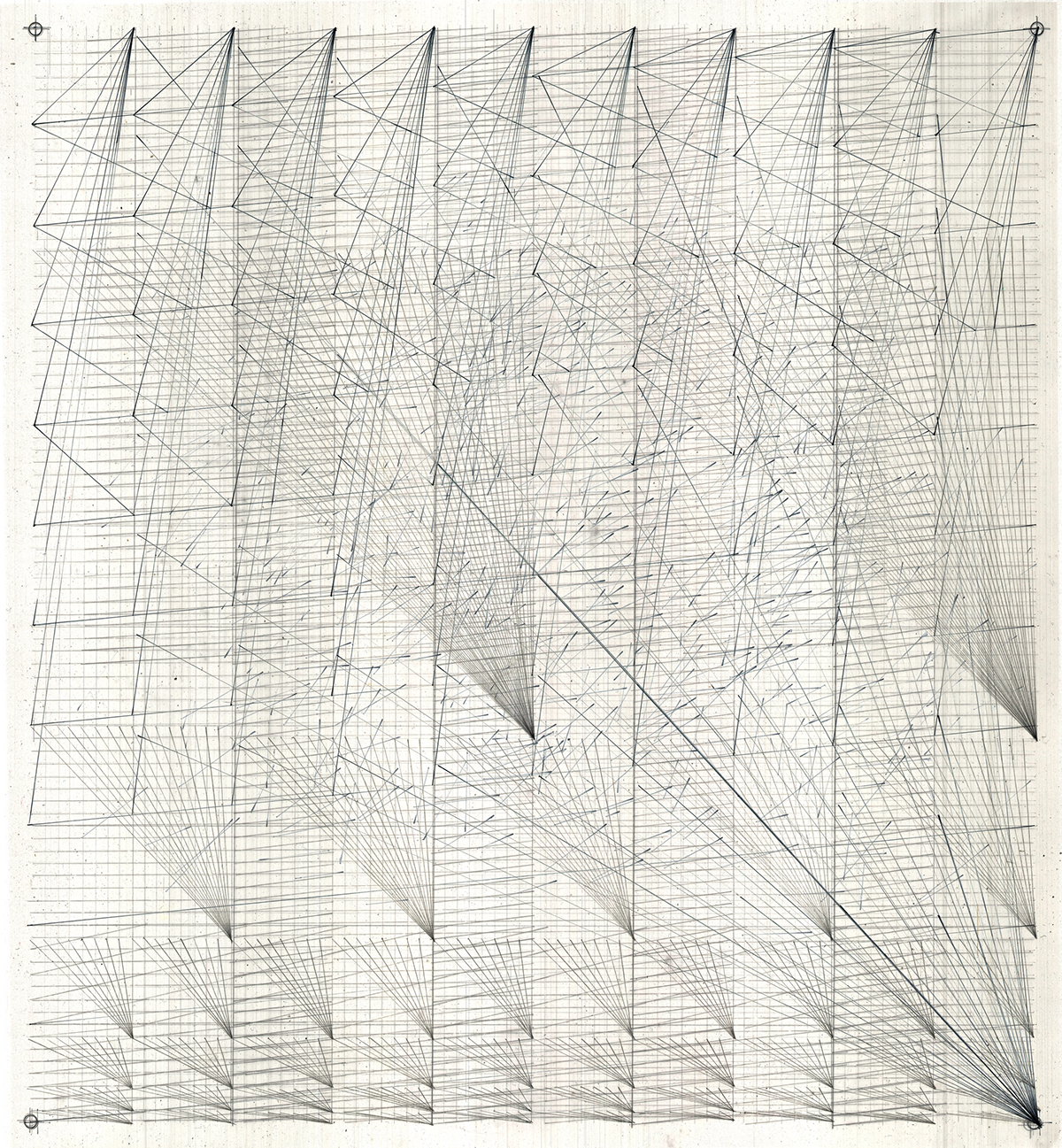
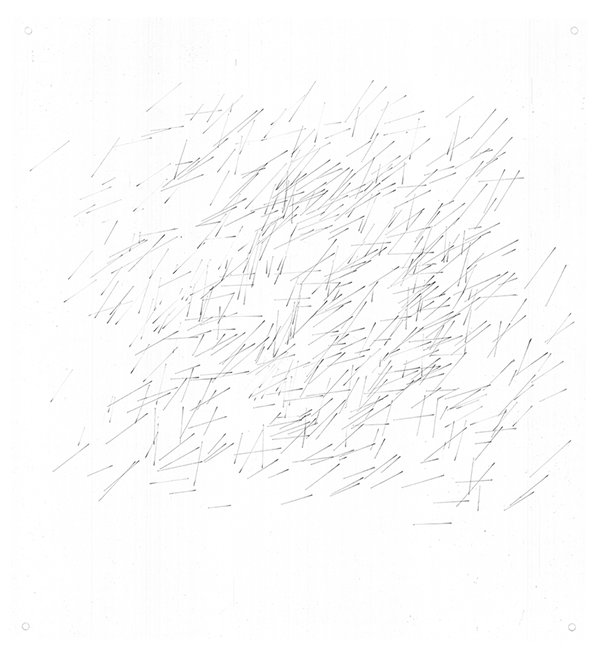

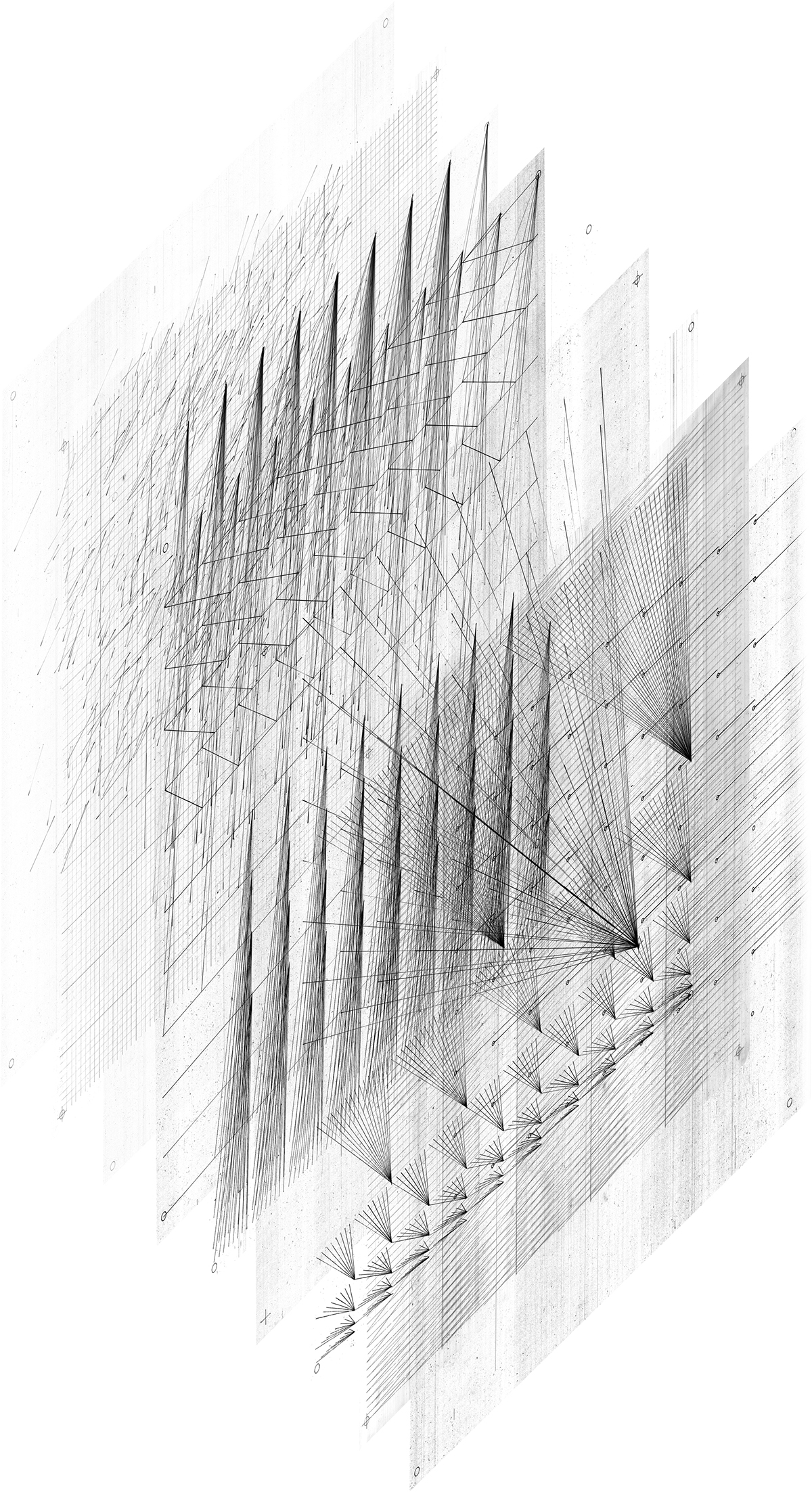
Phase 2: Thick Surface Constructs with Architectural Problems
First, an acknowledgement: a thick surface is impossible. Surfaces are thin. In fact, they are infi nitesimally thin. Their presence in architecture is entirely a matter of abstraction and perception–of edge, boundary, smoothness, and continuity of a two-dimensional realm. As we proceed in this assignment let’s endeavor to maintain rigorous though plastic conceptions of surface. How might it be possible to leverage the two-sided nature of surfaces (especially those which are non-planar) to articulate interior volumes? What are the implications of building a surface as opposed to building along a surface? How is the legibility of surface related to scale and material? Might it be possible to define a surface through the a removal, lack of, or disruption of matter?
(Left to Right): Carlo Scarpa, Louis Kahn, Oyler + Wu, Peter Zumthor, Judith Benzer, Lebbeus Woods, Diller + Scofidio Renfro, James Turrel, George Kavanagh, Eduardo Chillida, United Visual Artists, Diller + Scofidio Renfro
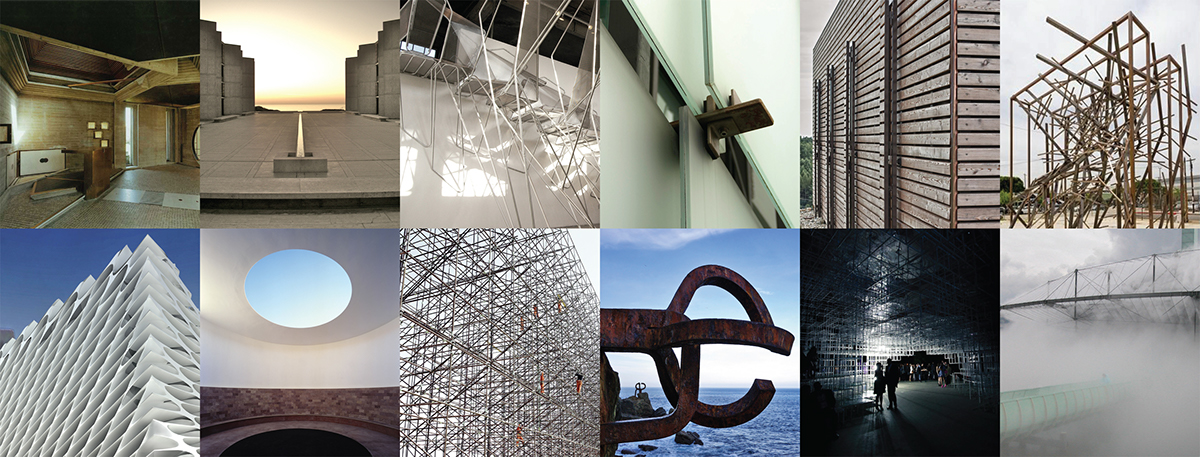
The direct, low level approach: material in drawing is given a third dimension (based on depth cues on the
drawing) and built/fabricated/drawn as matter. The formal language is consistent between drawing and construct.
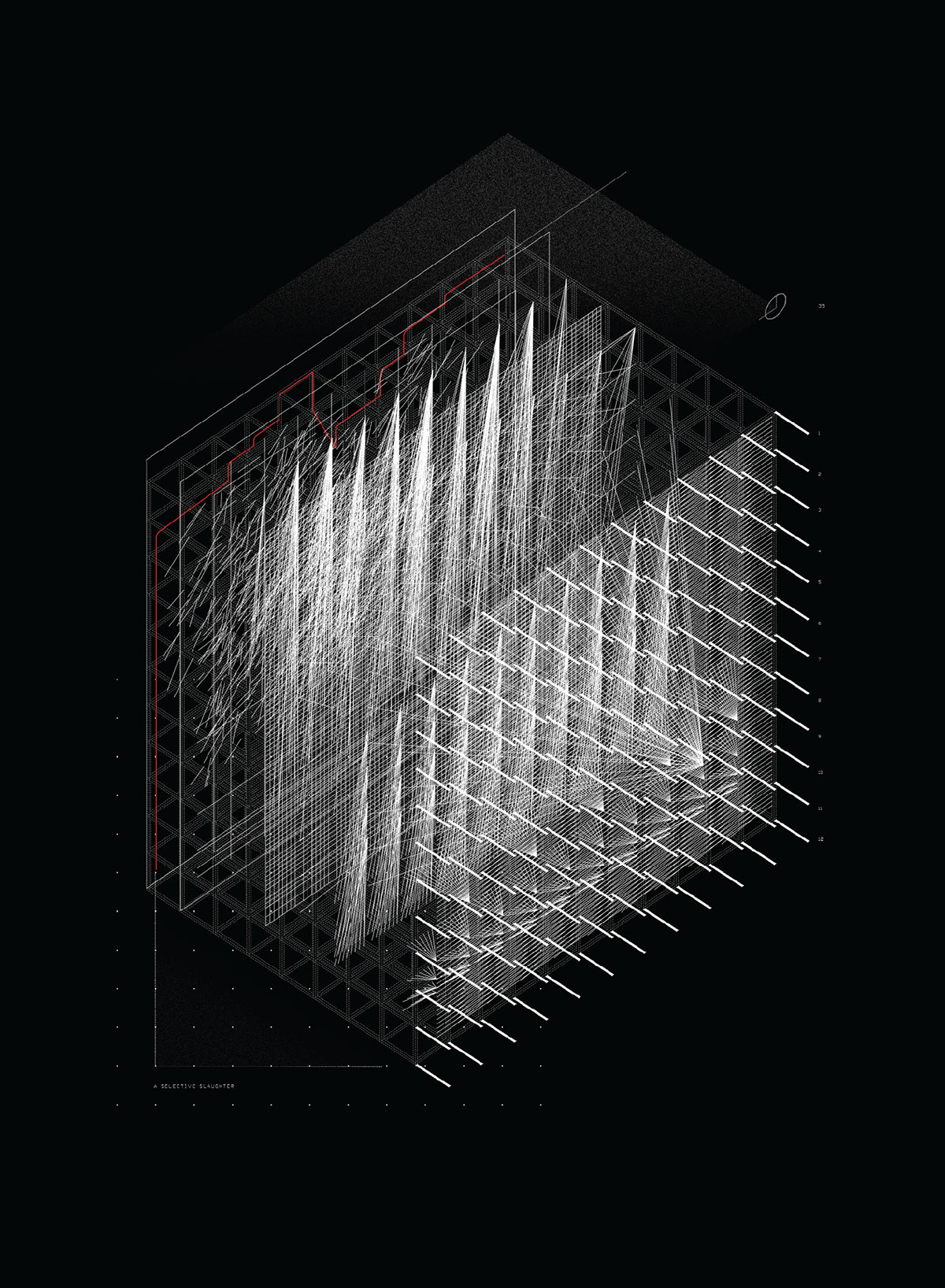
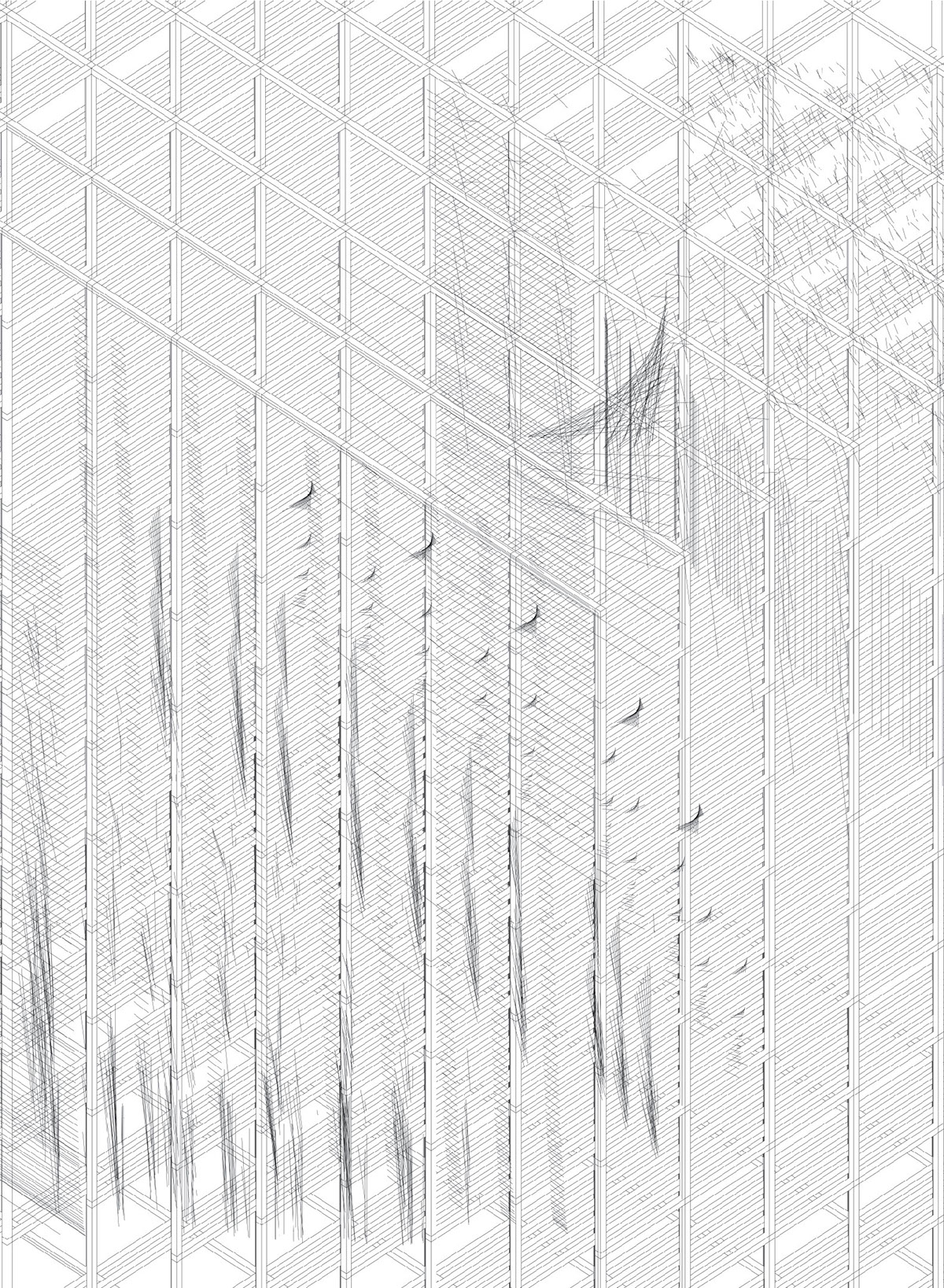
Direct: Line from line
The material of the drawing is expressed through a three-dimensional drawing, an isometric drawing. There is nothing in between, nothing inhibiting the expression of line. Yet, the drawing has no obvious structure; trajectory. It may very well be a fleeting moment in time, in between phase shifts.
What is a construct that makes, erases, and remakes itself?
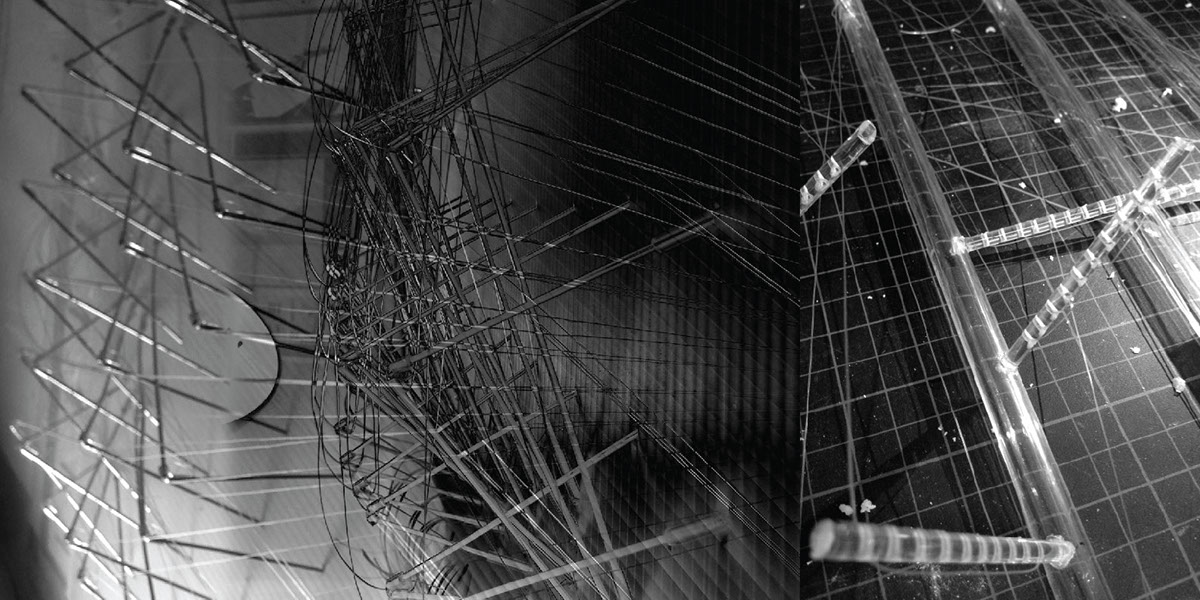
The interpretive approach: organizations and orders are carried through from drawing to construct. A new formal language is allowed to emerge given material and environmental constraints.
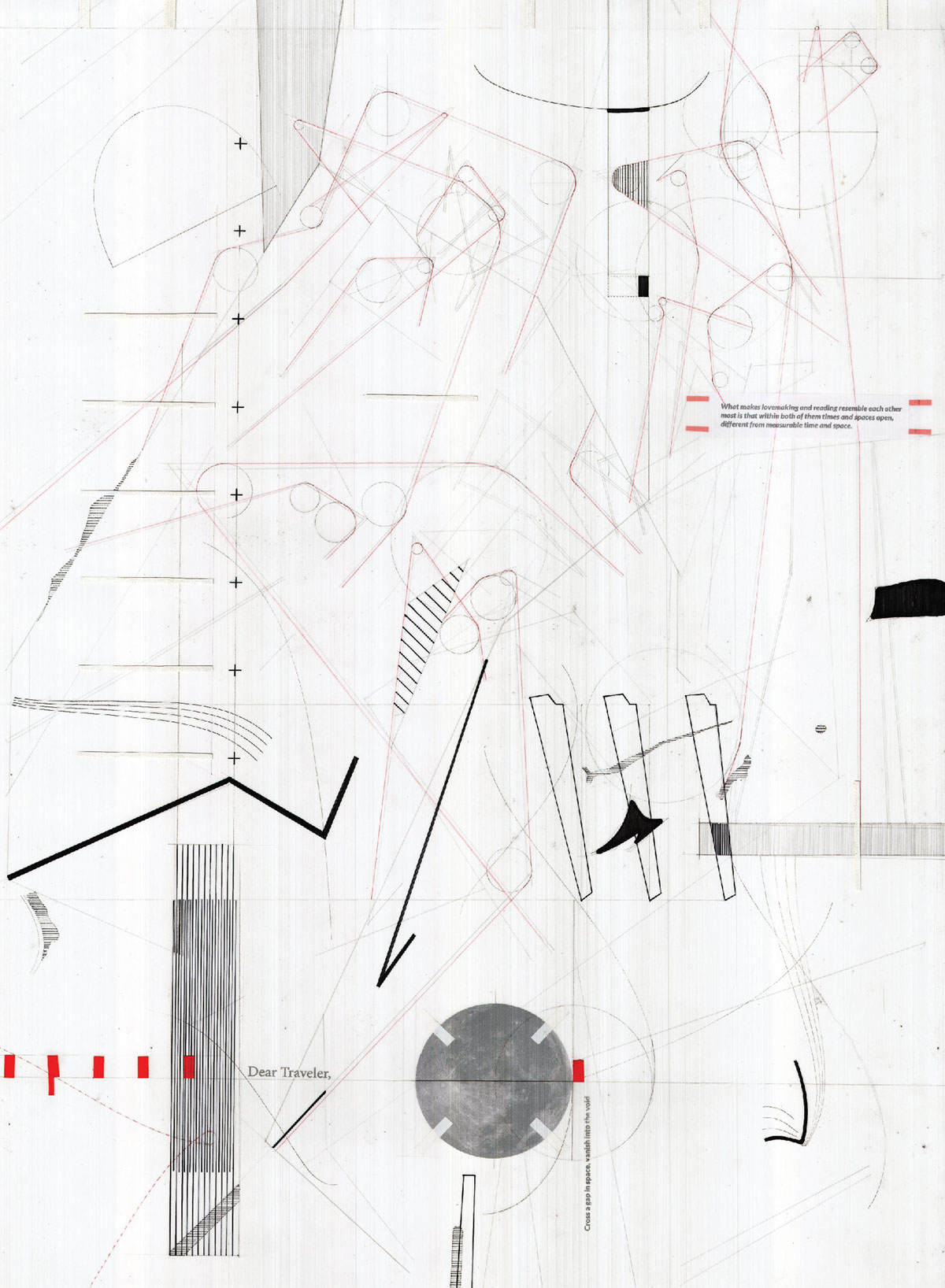
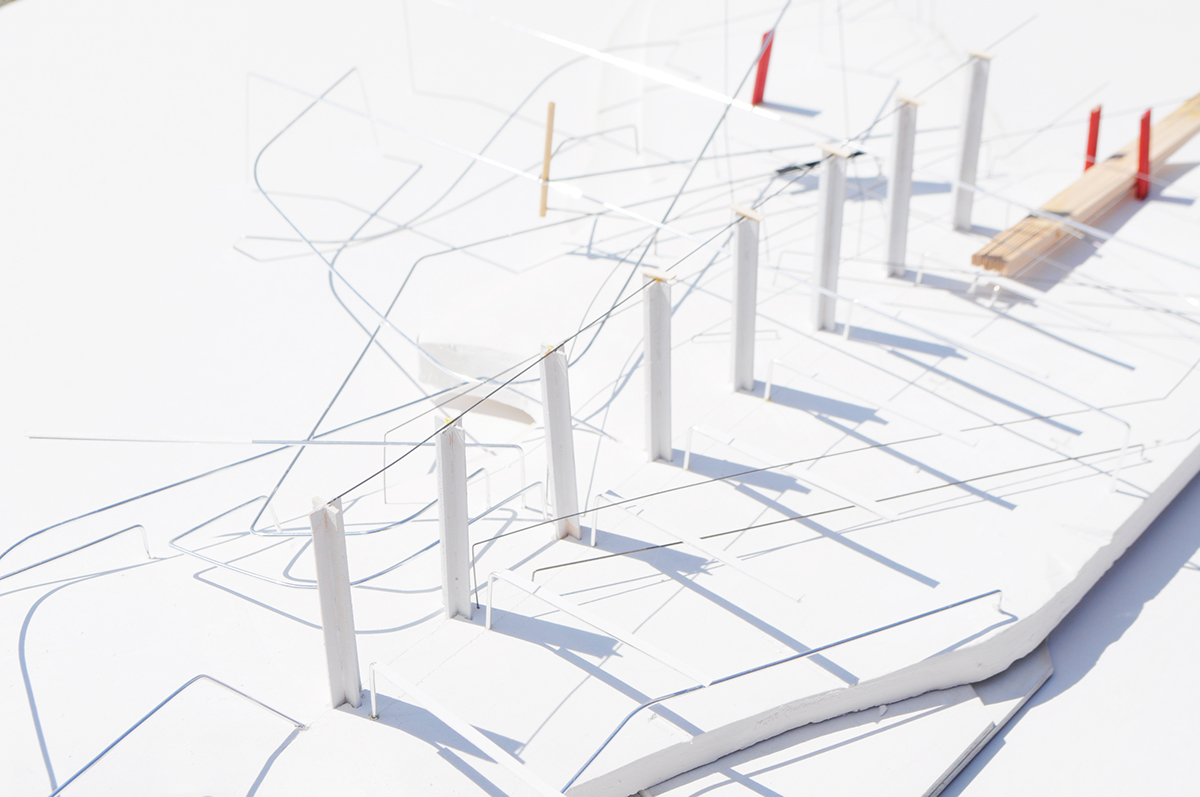
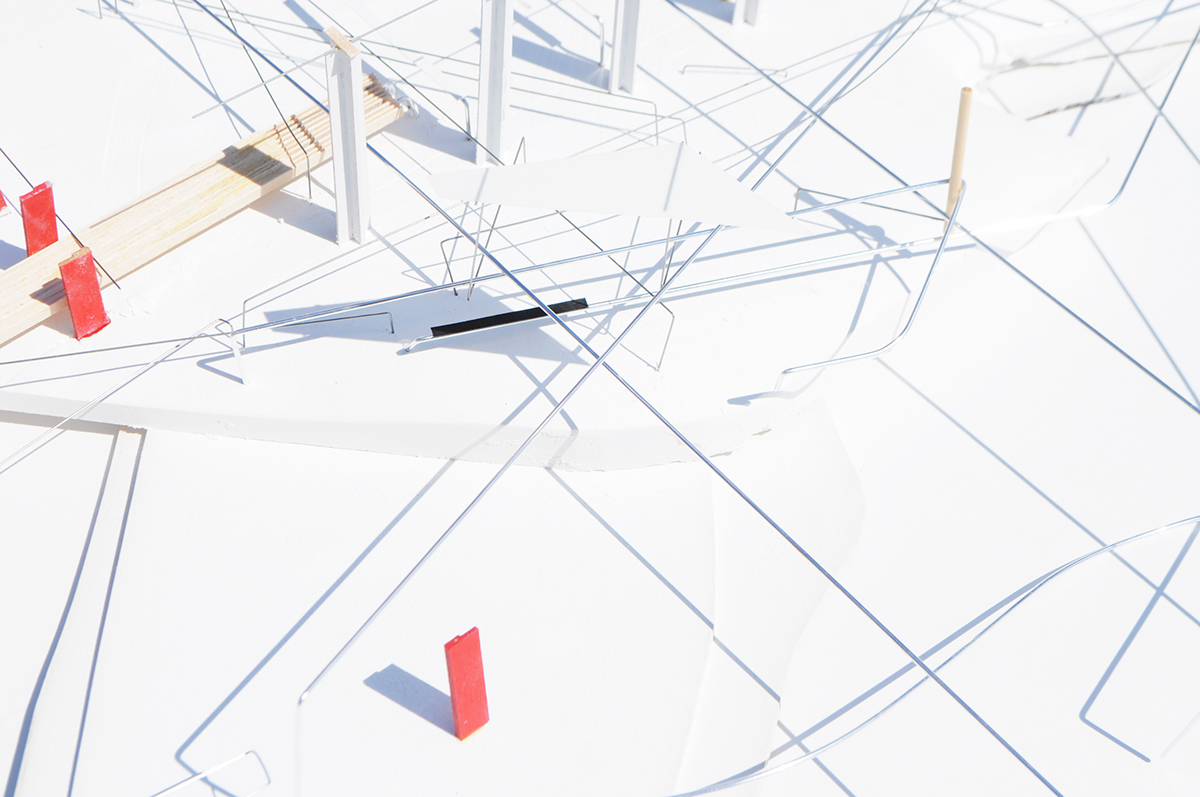
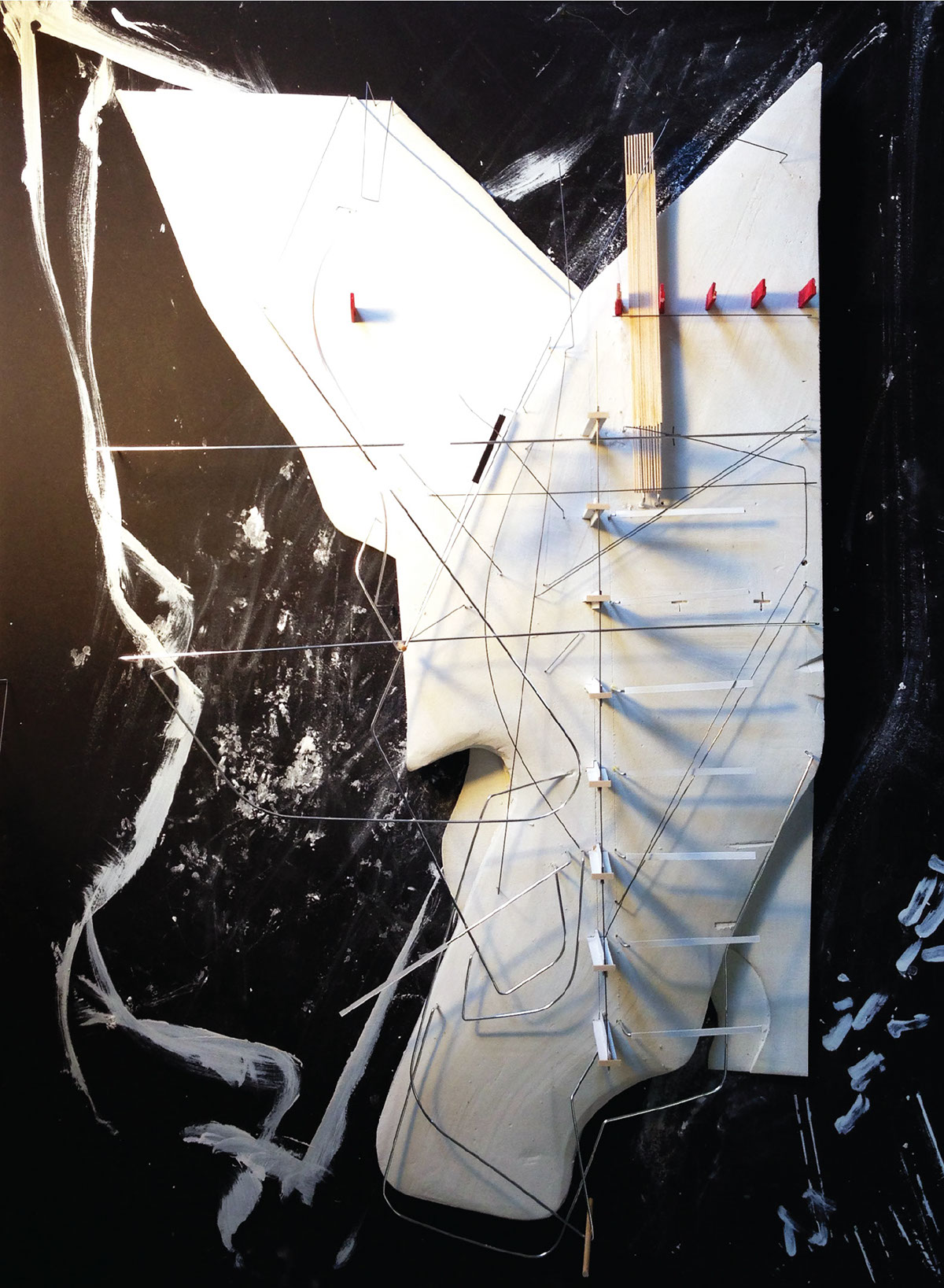
Interpretive: Surface from line
The drawing is explored through collage. Acting as a mediatory agent, the variation of techniques, both manual and digital, offer a breadth of suggestions. Contingent on the viewer’s perception, the ambiguity of a metric system produces stability and uncertainty.
What is a construct of fast and slow surface?
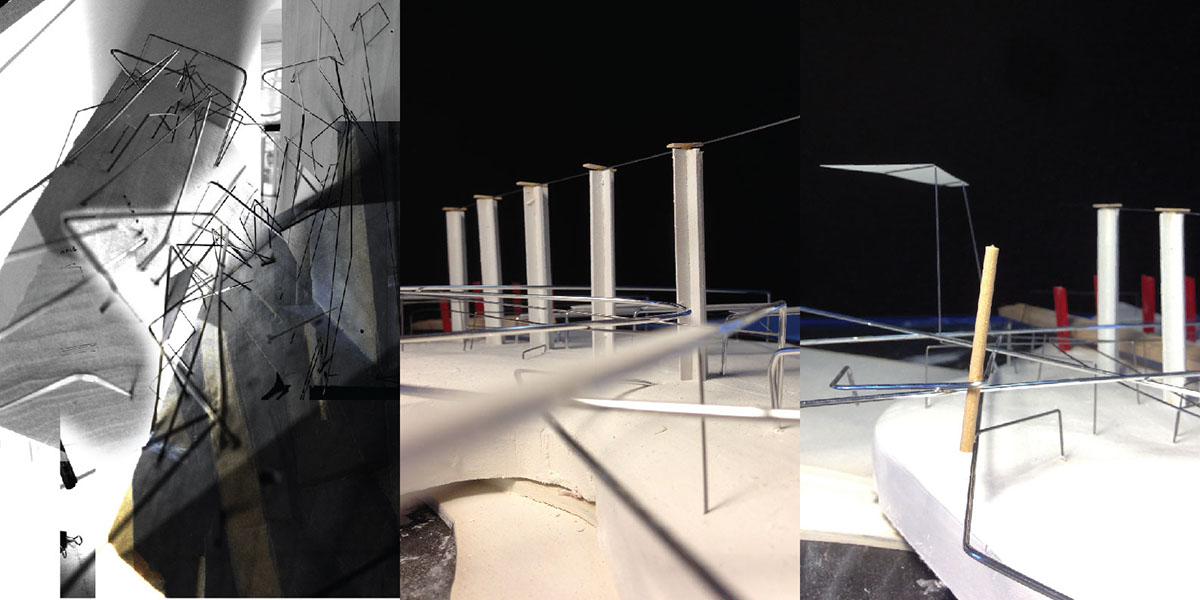
The procedural approach: the algorithm(s) used to create the drawing are is(are) extended into the third dimension and evolved to accommodate the performance and tectonic implications of material. The constructs may look and operate completely differently from the drawings.
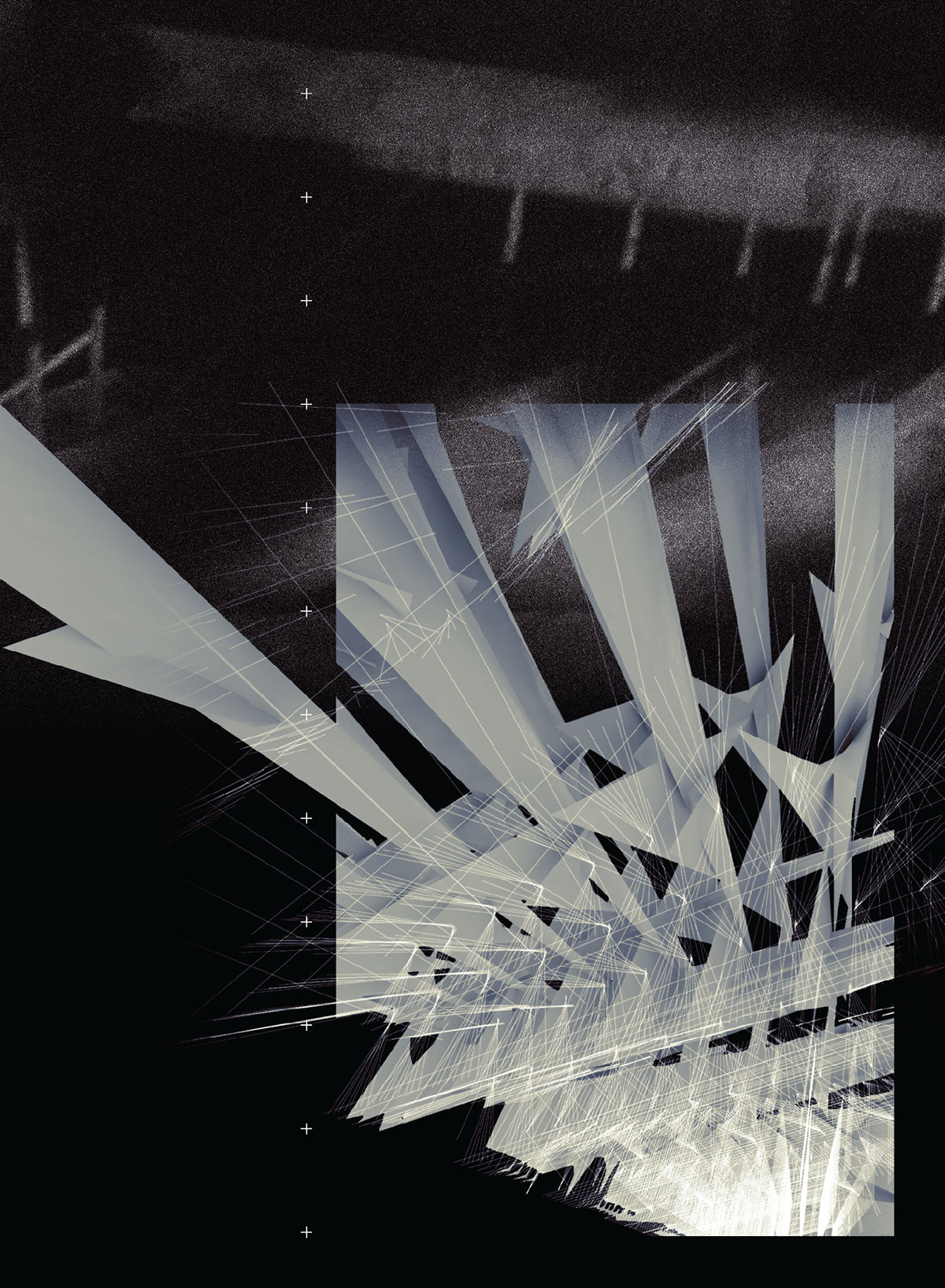
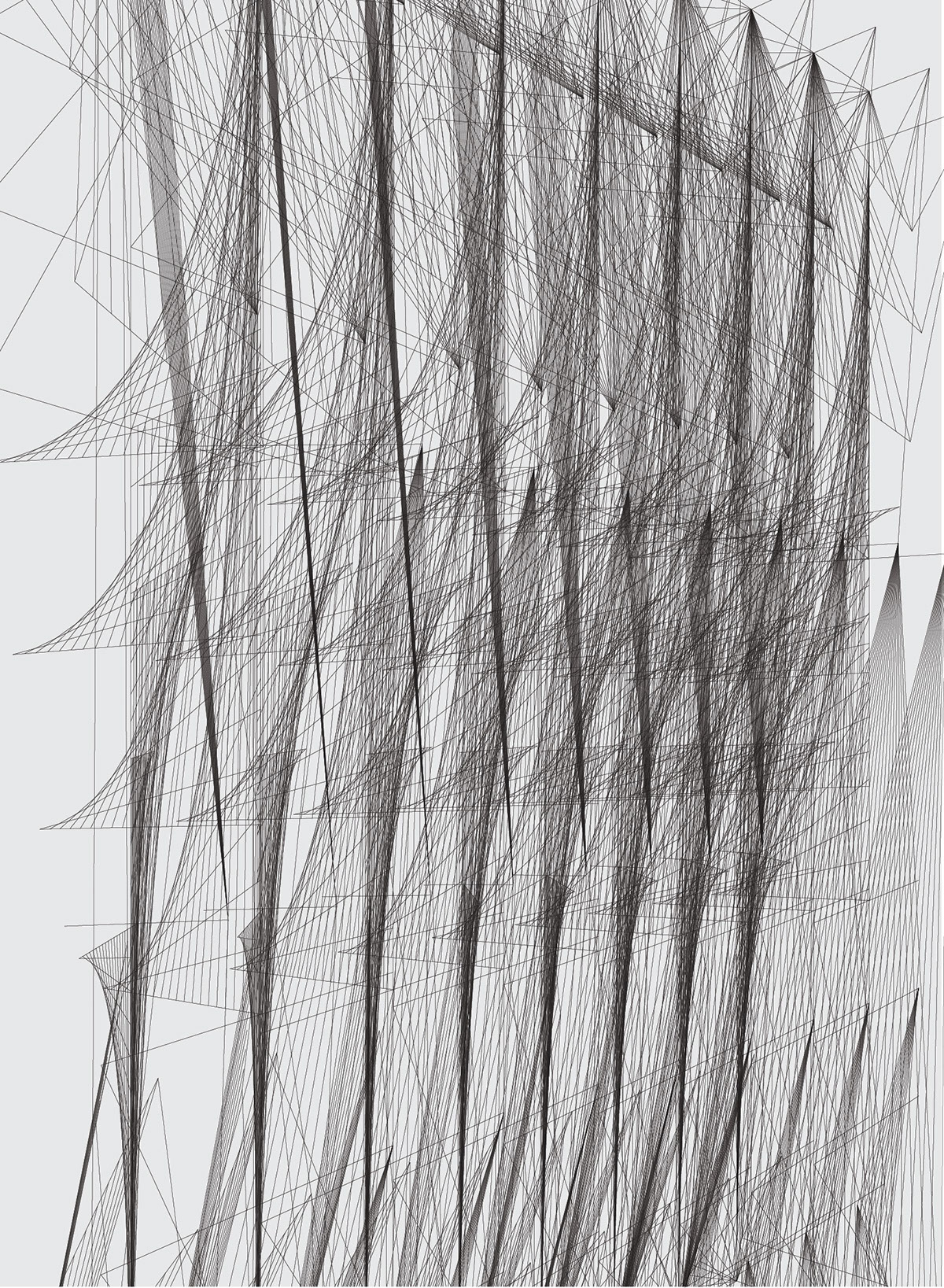
Procedural: Volume from line
Following an order developed using Python Script and Grasshopper the drawing explores the implied lines through space that act as scaffolding to support transforming volumes and voids of inhabitation.
What is a construct of time lapse?
